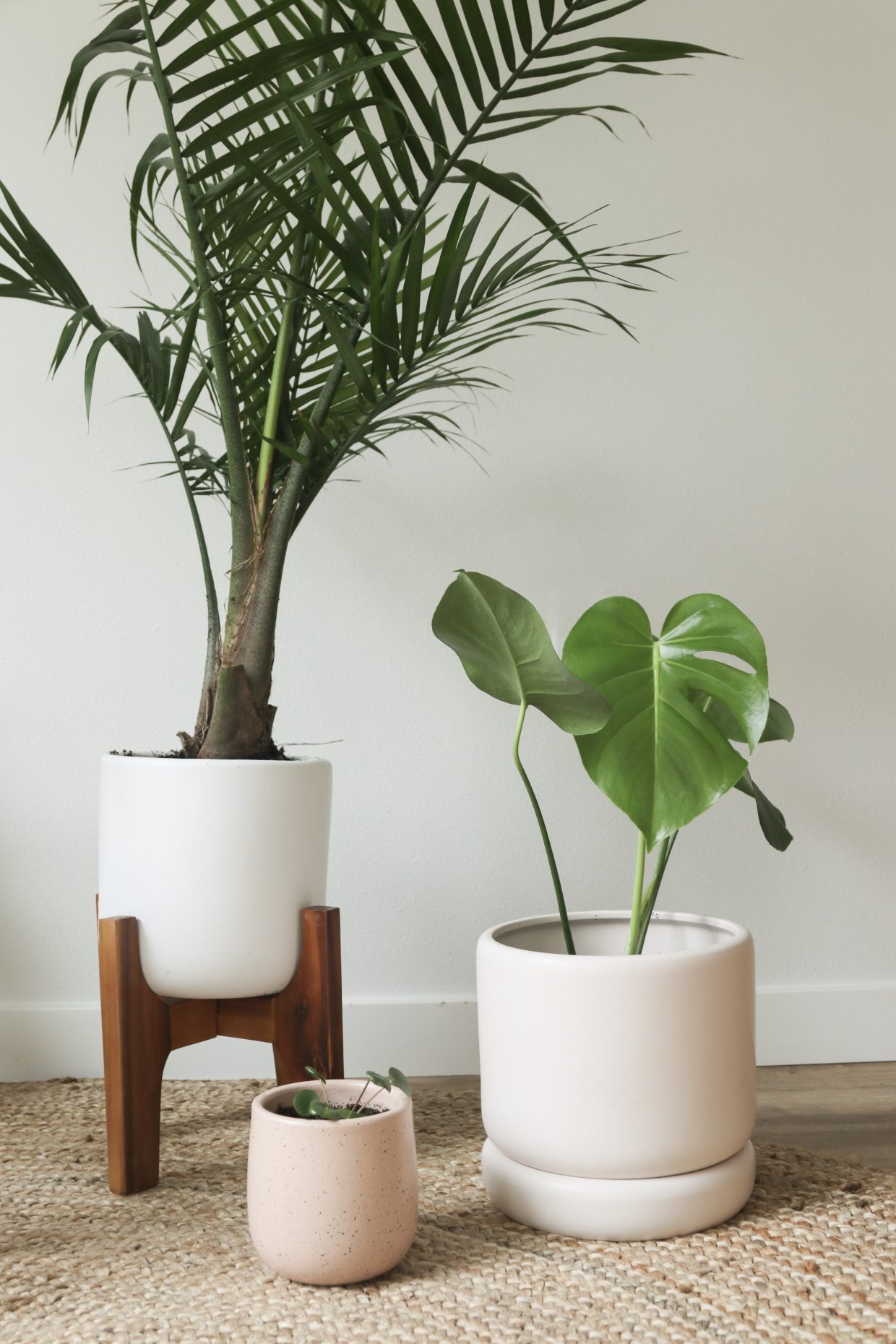
Best place to buy flower pots
I. Introduction
Adorned with vibrant blooms or lush greenery, flower pots are more than just containers for plants; they are artistic accents that transform indoor and outdoor spaces into captivating havens. From classic terracotta to sleek metal, the world of flower pots offers a diverse array of materials, styles, and functions to suit every plant and personal preference. However, navigating this vast landscape of options can be a daunting task for even the most seasoned plant enthusiast.
This comprehensive guide serves as your trusted companion in your quest for the perfect flower pots. We’ll delve into the captivating realm of pot materials, explore the diverse spectrum of designs, and embark on a journey to uncover the best places to procure these floral treasures. Whether you’re seeking classic elegance or a touch of rustic charm, this guide will empower you to make informed decisions and transform your home or garden into a flourishing oasis.
II. Navigating the Floral Emporium: Types of Flower Pots
A. Material Matters: The foundation of any flower pot lies in its material, each with its unique characteristics and suitability for specific plants.
-
Terracotta: Renowned for its rustic charm and breathability, terracotta pots are a beloved choice for outdoor plants and succulents. Their porous nature allows for excellent air circulation and prevents waterlogging, making them ideal for arid environments.
-
Ceramic: Epitomizing elegance and versatility, ceramic pots grace both indoor and outdoor settings with their timeless beauty. Available in a wide range of glazes and finishes, ceramic pots complement diverse décor styles and add a touch of sophistication to any space.
-
Plastic: Lightweight, affordable, and durable, plastic pots are a popular choice for indoor plants and nurseries. Their resistance to cracking and fading makes them ideal for high-traffic areas or environments prone to moisture.
-
Metal: Embracing sleek modernity, metal pots exude a touch of sophistication, particularly when paired with indoor décor. Their durability and resistance to rust make them suitable for both indoor and outdoor use.
-
Wood: For a touch of natural warmth and rustic charm, wood pots are an excellent choice. Their unique aesthetic complements bohemian and farmhouse styles, adding a touch of organic beauty to any space.
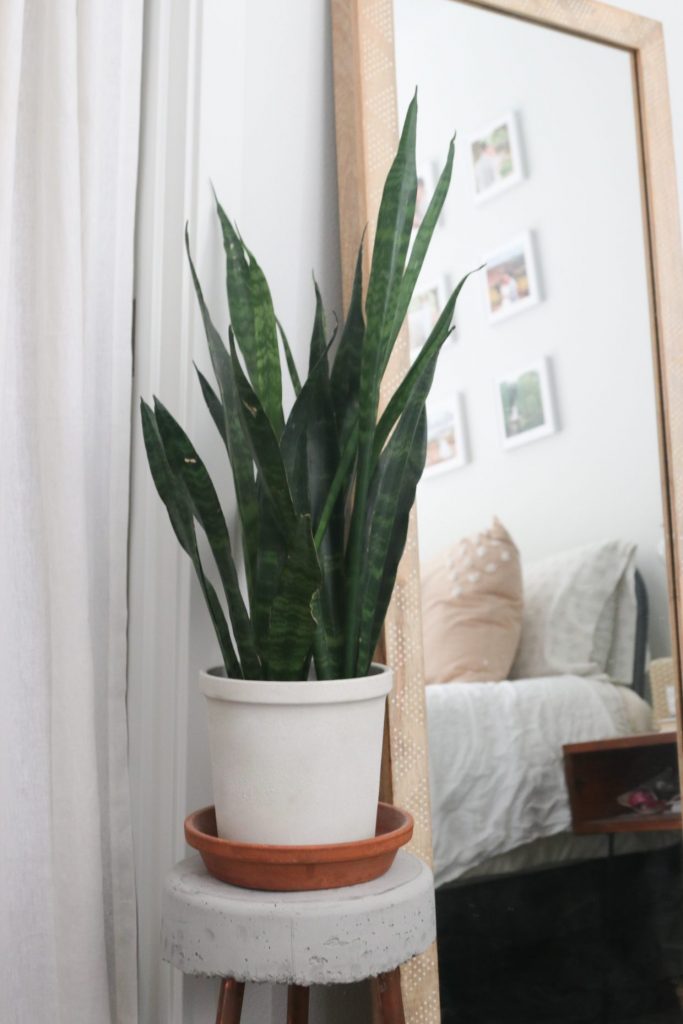
B. Design Delights: Beyond their material composition, flower pots come in a myriad of designs to cater to various plant types and personal tastes.
-
Classic Shapes: Timeless elegance reigns supreme with classic pot shapes like round, square, and rectangular. These versatile designs seamlessly integrate into any décor style, providing a neutral backdrop for your plants’ vibrant foliage and blooms.
-
Hanging Baskets: Ideal for cascading plants like ferns and vines, hanging baskets introduce a touch of whimsy and space-saving efficiency to your indoor or outdoor décor. Their ability to showcase the trailing foliage of these plants creates a visually appealing vertical accent.
-
Planters: Offering versatility and ample space, planters accommodate a variety of plant arrangements and décor styles. Whether you’re grouping succulents, creating a herb garden, or crafting a miniature landscape, planters provide the perfect canvas for your botanical creations.
-
Self-Watering Pots: For busy plant owners or those prone to travel, self-watering pots offer a convenient solution. Their ingenious design ensures optimal hydration for your plants, even during extended absences, providing peace of mind and promoting healthy growth.

III. Embarking on the Quest: Where to Find the Perfect Flower Pots
A. Big Box Bonanzas: Big box home improvement stores like Lowe’s, Home Depot, and Menards offer a vast selection of flower pots at competitive prices, making them a popular destination for plant enthusiasts.
-
Advantages: The sheer volume of options available at big box stores ensures that you’re likely to find the perfect pot for your needs. Additionally, the competitive pricing makes these stores an attractive option for budget-conscious shoppers.
-
Considerations: While big box stores offer a wide variety, they may not always carry the most unique or high-end designs. Additionally, the sheer size of these stores can be overwhelming for some shoppers.
B. Specialty Nurseries and Garden Centers: For plant enthusiasts seeking expert guidance and a wider selection of unique or rare plant varieties, specialty nurseries and garden centers are a haven.
-
Advantages: The knowledgeable staff at specialty nurseries and garden centers can provide personalized recommendations based on your specific needs and plant requirements. Additionally, these stores often carry a wider selection of unique or rare plant varieties that may not be available at big box stores.
-
Considerations: The prices at specialty nurseries and garden centers tend to be higher than those at big box stores. Additionally, the selection may be more limited in terms of overall variety.
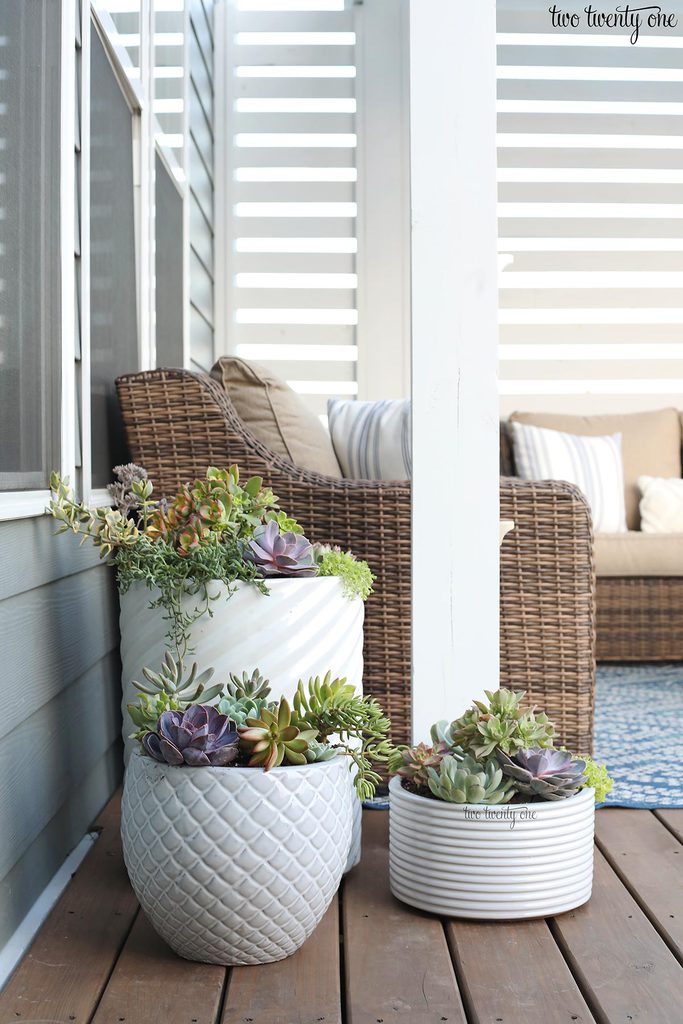
C. Online Retailers: The vast online marketplace offers an unparalleled selection of flower pots from around the globe, accessible from the comfort of your home.
- Advantages: Online retailers provide an extensive selection of flower pots, allowing you to compare prices and read reviews before making a purchase. This ensures you find the perfect pot within your budget and with the desired features. The convenience of online shopping eliminates the need to travel and allows you to browse at your own pace.
- Considerations: Shipping costs can add to the final price of your flower pots. Additionally, you cannot physically inspect the pots before purchasing, and there may be delays in delivery.
D. Thrift Stores and Flea Markets: Unearthing hidden treasures and vintage gems is a thrilling experience for bargain hunters and those seeking unique pieces for their décor. Thrift stores and flea markets offer a surprising selection of flower pots at incredibly affordable prices.
-
Advantages: Thrift stores and flea markets allow you to find one-of-a-kind flower pots that add a touch of personality to your space. Additionally, these locations are eco-friendly as they give pre-loved pots a new life. The affordability makes them a budget-friendly option for plant enthusiasts.
-
Considerations: The inventory at thrift stores and flea markets is unpredictable, so finding the specific size or style you need may require patience and frequent visits. It’s crucial to inspect the pots thoroughly for any cracks, chips, or drainage issues before purchasing.
E. Local Artisans and Craft Fairs: Supporting local artists and adding a touch of individuality to your space are compelling reasons to explore the offerings of local artisans and craft fairs.
-
Advantages: Local artisans often create unique flower pots with handcrafted designs, allowing you to express your personal style and support your community. You may even have the opportunity to commission a custom pot that perfectly matches your vision.
-
Considerations: The prices at local artisans and craft fairs may be higher than those found at big box stores. Additionally, the availability of pots will be limited to the artists participating in the fair or the artisan’s current inventory.

IV. Considerations for the Savvy Shopper
Making informed decisions about your flower pots goes beyond aesthetics. Here are some key factors to consider before purchasing:
A. Size Matters: Selecting the right pot size is crucial for the health of your plant. A pot that is too small can restrict root growth, while a pot that is too large can lead to overwatering. Research the mature size of your plant and choose a pot that allows for future growth but isn’t excessively large.
B. Drainage Essentials: Proper drainage is essential for preventing waterlogging and root rot. Ensure the flower pot you choose has drainage holes at the bottom to allow excess water to escape. If the pot doesn’t have drainage holes, consider using a liner with drainage holes or placing the pot on top of a bed of gravel to elevate it and allow for drainage.
C. Material Matchmaking: Matching the pot material to your plant’s needs and your intended placement is crucial. For example, terracotta allows for excellent drainage but may not be suitable for moisture-loving plants. Consider the plant’s requirements, whether it will be placed indoors or outdoors, and your personal aesthetic preferences when choosing a material.
D. Aesthetic Appeal: While functionality is important, don’t underestimate the power of a beautiful flower pot. Choose a pot that complements the style of your plant and surrounding décor. Consider the color, texture, and design of the pot to create a cohesive and visually appealing arrangement.
V. Conclusion
The quest for the perfect flower pot is a journey that empowers you to create a flourishing haven for your beloved plants. With a deeper understanding of pot materials, designs, and the best places to make your purchases, you are now equipped to make informed decisions. Whether you seek classic elegance from a ceramic pot or a touch of rustic charm from a terracotta option, this guide has equipped you with the knowledge to choose the ideal pot for each plant in your collection.
Remember, the perfect flower pot elevates the beauty of your plant and fosters its well-being. So, embark on your flower pot shopping adventure with confidence, knowing that you possess the expertise to transform your space into a thriving oasis filled with vibrant foliage and blooms. Happy planting!
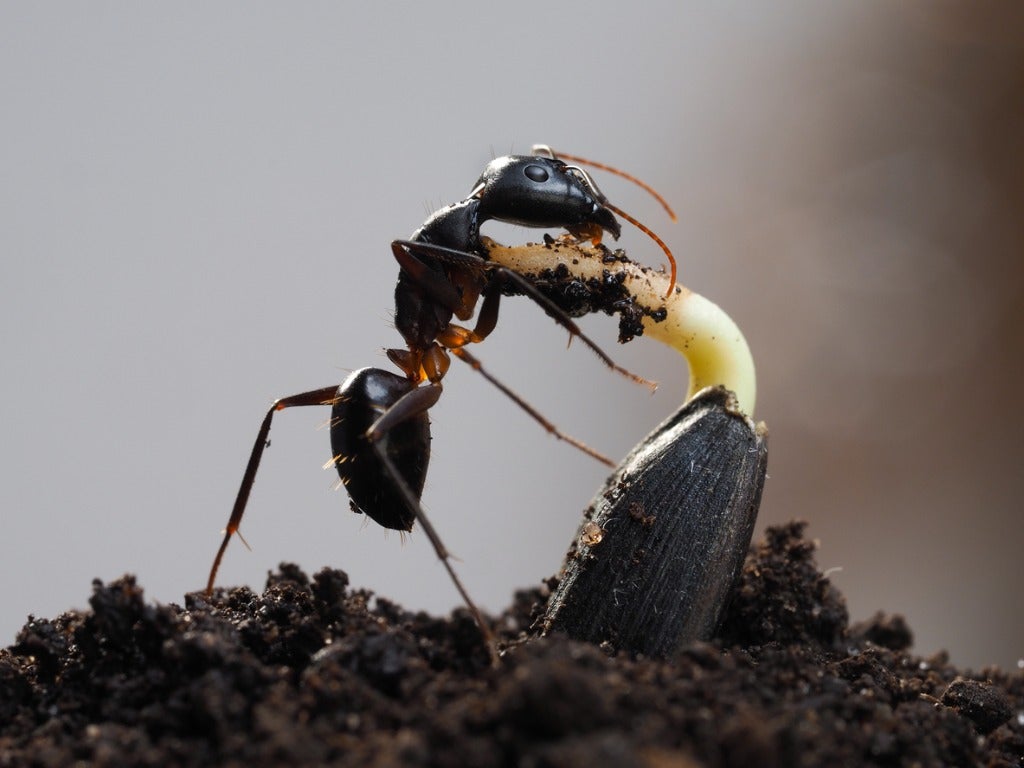
Conquering Critters: How to Effectively Eradicate Ants in Your Flower Pots

Flowering plants are a fantastic way to brighten your home and add a touch of nature indoors. However, pesky ants in your flower pots can quickly turn this joy into frustration. These tiny insects not only damage your beloved plants, but they can also create other problems like spreading diseases and causing bites. So, learning how to effectively eliminate ants from your flower pots becomes crucial.
Understanding Flower Pot Ants
There are several reasons why ants might be drawn to your flower pots:
- Food Sources: The sweet honeydew secreted by aphids and other pests, spilled food or drinks, and decaying plant matter are all like buffets for ants.
- Moisture: Damp soil, condensation on the pots, or nearby water sources provide the perfect hydration station for thirsty ants.
- Shelter: The flower pot itself, the soil within, surrounding plants, or nearby debris can all offer a cozy haven for ant colonies.
The harm ants can inflict on your flowers is two-fold:
- Plant Damage: Ants may feed on your plant’s sap, leaves, or flowers, causing visible damage and weakening the plant.
- Pest Spread: Ants can act as unwitting taxis for aphids, mealybugs, and other scale insects, further harming your plants.
- Human Nuisance: Ant bites and stings can be painful and itchy, and they can even contaminate food or drinks.
Prevention is Key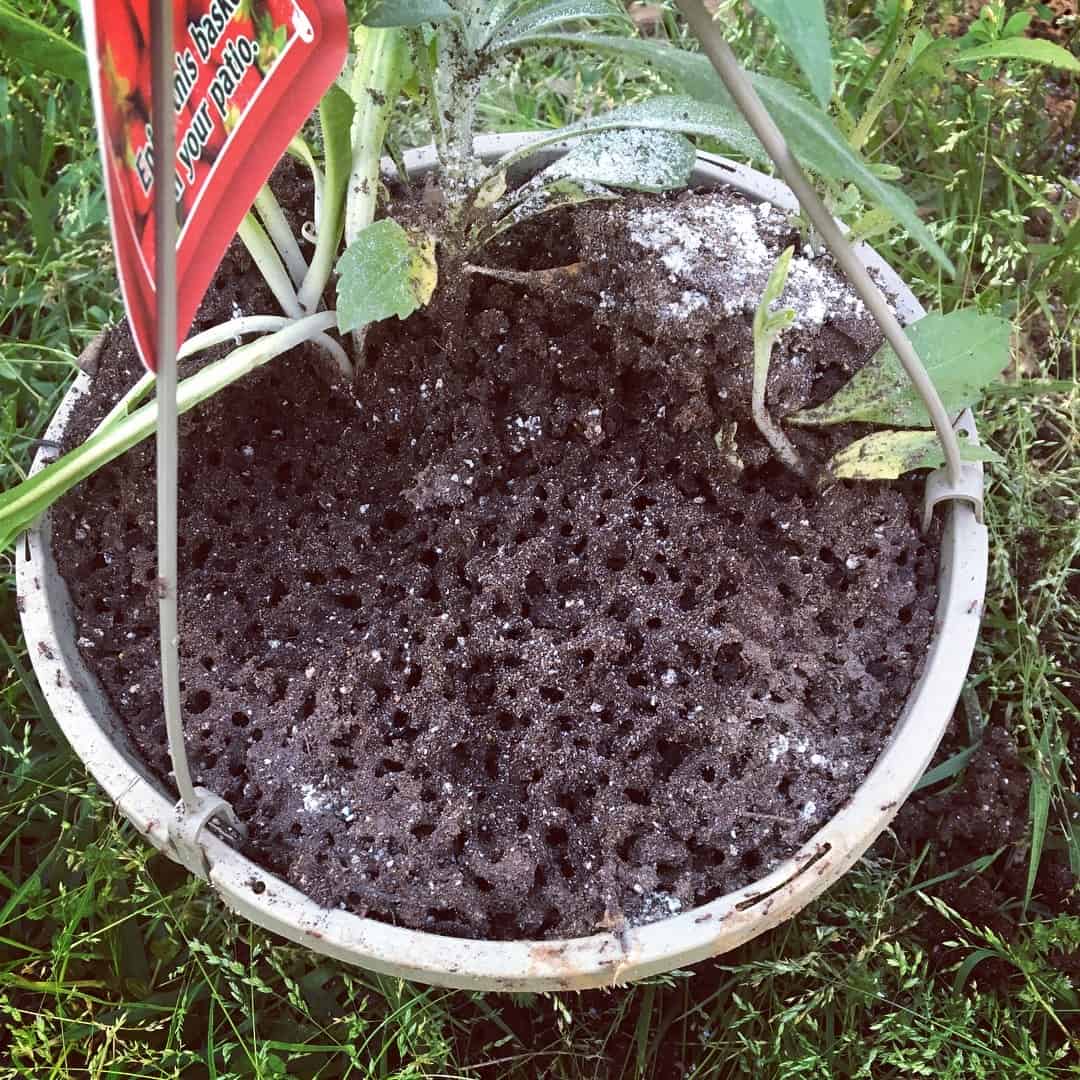
The best way to deal with ants in your flower pots is to prevent them from showing up in the first place. Here are some effective preventative measures:
- Eliminate Food Sources: Keep aphid and other pest populations under control. Clean up any spills or fallen leaves promptly, and maintain a clean area around your plants.
- Moisture Management: Avoid overwatering your plants. Ensure good drainage for your pots and improve air circulation around them.
- Create Physical Barriers: Use sticky traps, petroleum jelly, or diatomaceous earth around the base of your pots to create a barrier that deters ants. Elevate your pots on stands or saucers filled with water to create another obstacle. Additionally, seal any cracks or openings in your pots to prevent them from becoming ant entry points.
Natural Control Methods
If ants do manage to infiltrate your pots, there are several natural methods you can try to eradicate them:
- Natural Repellents: Spray your plants with a peppermint oil solution, or sprinkle cinnamon, cayenne pepper, or coffee grounds around the base of your pots. These have a repelling effect on ants.
- Nature’s Predators: Attract beneficial insects like ladybugs and lacewings, which are natural predators of ants. Provide them with shelter, food sources (like aphids!), and water sources to encourage them to make your plants their home.
- Insecticidal Soap: Mix insecticidal soap with water and spray it directly on the ants and their trails. This is a safe and effective way to eliminate them.
Chemical Control Methods (Use with Caution!)
For severe or persistent ant infestations, you may need to consider using chemical control methods as a last resort. However, it’s important to exercise caution with these methods:
- Ant Baits: Place ant bait stations strategically near ant trails or suspected nesting sites. Follow the instructions carefully and keep them out of reach of children and pets.
- Ant Sprays or Dusts: These should be targeted directly at ant trails and nesting sites. Choose products specifically labeled for use around plants and always follow safety precautions when using them.
- Professional Pest Control: For very serious ant infestations that don’t respond to other methods, consider hiring a licensed and experienced pest control professional.
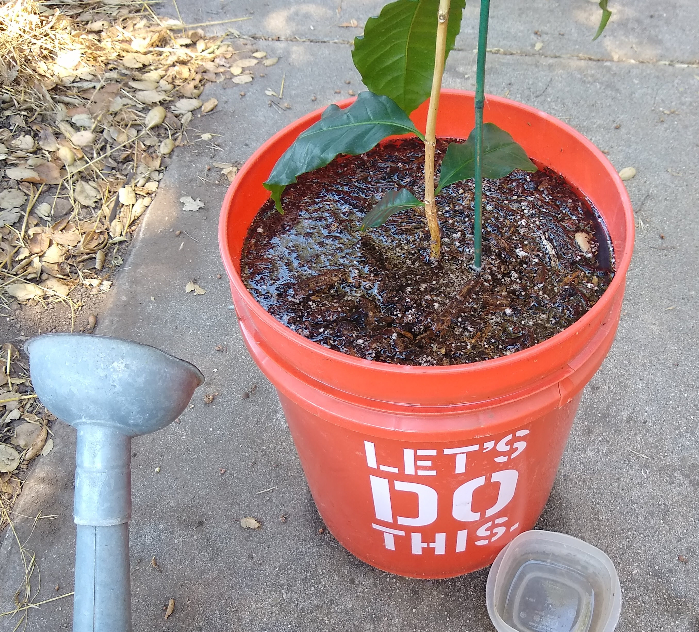
Repotting and Soil Treatment
In some cases, repotting your plant and treating the soil might be necessary to completely eliminate the ants:
- When to Repot: Consider repotting if the ant infestation is severe, if you see visible ant nests in the soil, or if other control methods haven’t been successful.
- Soil Treatment: Discard the old potting soil completely. Wash the pot thoroughly with soapy water. Repot your plant with fresh, sterile potting mix.
Prevention and Ongoing Maintenance
Remember, vigilance is key to keeping ants at bay. Here’s how to maintain ant-free flower pots:
- Regular Inspection: Regularly check your plants, pots, and surrounding areas for signs of ant activity, especially after rainy weather or during warm periods.
- Continued Maintenance: Maintain cleanliness around your plants, eliminate potential food sources for ants, and continue using preventative measures as needed. Address any new ant infestations promptly to prevent them from taking hold.
By employing a comprehensive approach that combines prevention, monitoring, and timely action, you can effectively control ant infestations and keep your flower pots thriving with beautiful blooms.
The Final Touches: Keeping Your Flower Paradise Ant-Free
Conquering those pesky ants in your flower pots is a battle worth winning. Here are some additional tips to ensure your floral haven remains ant-free:
- Choosing the Right Potting Mix: Opt for well-draining potting mix to prevent moisture buildup, which attracts ants. Consider adding perlite or sand to improve drainage.
- Fertilizing Wisely: Overfertilizing can attract ants due to the increase in sugar levels in the soil. Fertilize your plants according to the specific needs of each plant and avoid overdoing it.
- Keeping it Mulch-Free: While mulch helps retain moisture, it can also create a welcoming environment for ants. Avoid using mulch directly around your flower pots, or choose inorganic mulch options like pebbles or crushed stone.
- Indoor vs. Outdoor Plants: Strategies may differ slightly depending on where your plants reside. For outdoor plants, consider creating ant barriers around the perimeter of your planting area with diatomaceous earth or a natural stone border.
Remember: Patience is key. Eliminating an established ant colony may take some time and require a combination of methods. Don’t get discouraged if you don’t see immediate results.
Living in Harmony with Nature:
While we strive to keep ants out of our flower pots, it’s important to remember they play a vital role in the ecosystem. Consider attracting them to designated areas outside your home, away from your precious plants. You can create an “ant hotel” using natural materials like wood chips, leaves, and stones. This provides them with a habitat and keeps them away from your flower pots.
The Joy of Healthy Plants:
By implementing these strategies, you can create an environment where your flower pots flourish and remain free from pesky ants. The reward? Beautiful, healthy plants that bring life and color to your indoor or outdoor space. So, put these tips into practice, enjoy the beauty of your flowers, and celebrate a victory over those tiny invaders!

Mail Manager Curbside Locking Security Mailbox
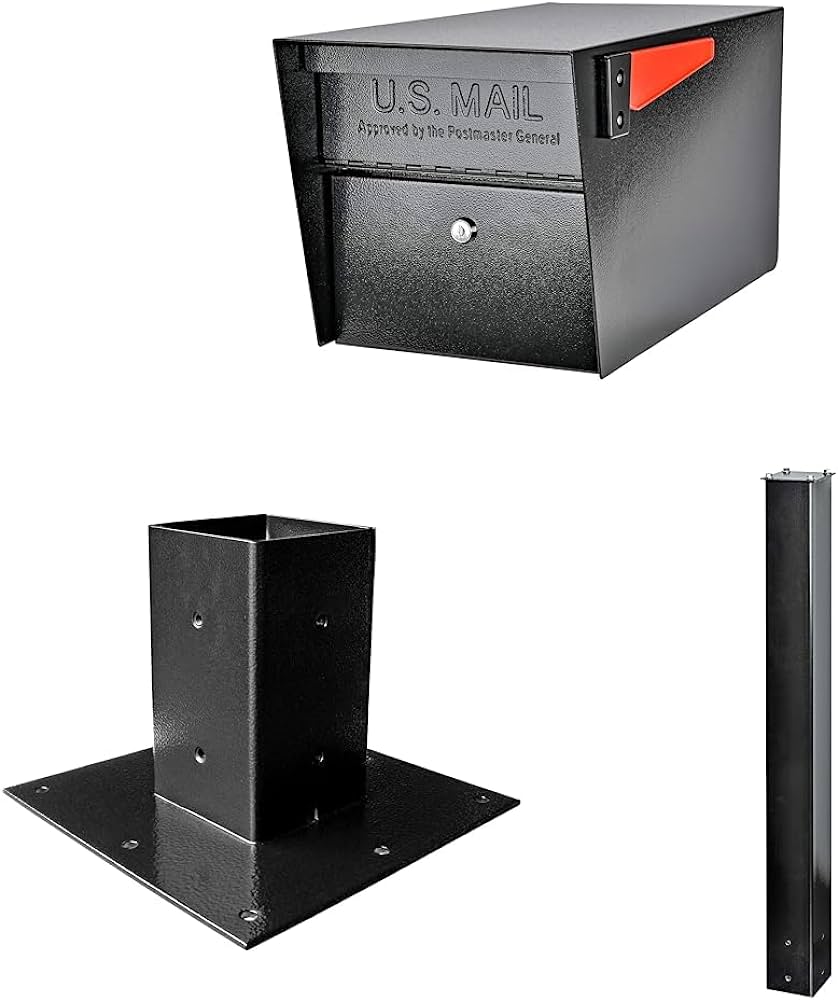
I. Introduction
A. Overview of Mail Manager Curbside Locking Security Mailbox:
In the realm of mailboxes, the Mail Manager Curbside Locking Security Mailbox stands as a prominent choice for homeowners seeking a harmonious blend of security, durability, and aesthetic appeal. This mailbox, crafted from heavy-gauge galvanized steel, boasts resilience against the elements, while its patented anti-pry latch locking mechanism safeguards your precious mail from prying hands. With its innovative baffle door design, it accommodates small packages and thwarts fishing attempts, while its vandal-resistant flag ensures visibility to mail carriers, even in challenging weather conditions.
B. Purpose of the Guide:
This comprehensive guide delves into the intricate details of the Mail Manager Curbside Locking Security Mailbox, exploring its features, benefits, specifications, and design considerations. Additionally, we’ll delve into the installation process, maintenance guidelines, and user experiences, equipping you with the knowledge necessary to make an informed decision about whether this mailbox aligns with your needs.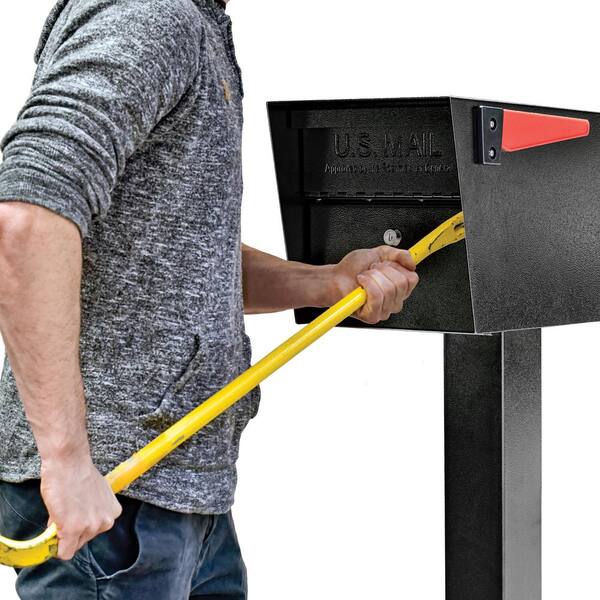
II. Features and Benefits of Mail Manager Curbside Locking Security Mailbox
A. Key Features:
-
Durable Construction: Galvanized steel forms the foundation of this mailbox, ensuring its ability to withstand the rigors of harsh weather conditions and resist the damaging effects of rust and corrosion.
-
Patented Anti-Pry Latch: The patented anti-pry latch locking mechanism provides an extra layer of security, making it extremely difficult for thieves to pry open the mailbox.
-
Innovative Baffle Door Design: The baffle door design allows for the delivery of small packages and prevents fishing, ensuring your mail remains protected from tampering.
-
Vandal-Resistant Flag: The vandal-resistant flag ensures that mail carriers can easily spot the mailbox, even in heavy weather or low-light conditions.
-
Variety of Styles and Colors: The Mail Manager comes in a variety of styles and colors to complement your home’s exterior, enhancing its overall curb appeal.
B. Benefits:
- Enhanced Security: To begin, the secure design and locking mechanism safeguard your mail from theft and tampering, providing peace of mind. Additionally, the galvanized steel construction and durable finish offer weather resistance, ensuring long-lasting performance.Package Compatibility: Furthermore, the baffle door design accommodates small packages, reducing trips to the post office and enhancing convenience. Moreover, the mailbox comes with pre-drilled holes and includes mounting hardware, making installation a breeze, even for those with limited DIY experience.
Attractive Appearance: Lastly, the sleek design and variety of styles complement various home exteriors, adding a touch of elegance and sophistication to your curbside appeal. These features collectively make it an ideal choice for residential mailbox needs.
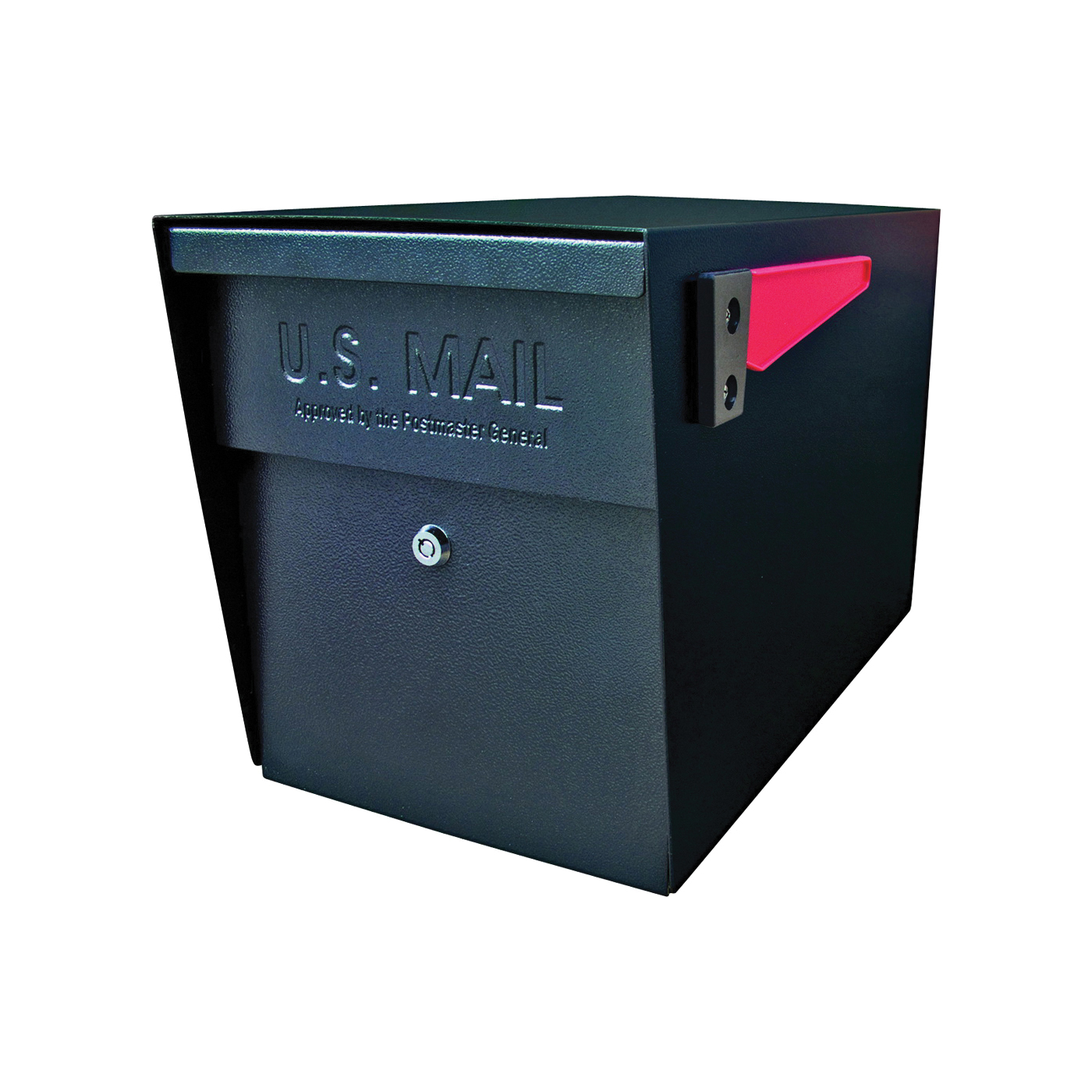
III. Specifications and Design Considerations
A. Specifications:
-
Material: Heavy-gauge galvanized steel
-
Finish: Powder-coated in various colors
-
Capacity: Medium
-
Dimensions: 18.75 inches (H) x 10 inches (W) x 6.5 inches (D)
-
Weight: 6 pounds
B. Design Considerations:
-
Mounting Location: Carefully select a mounting location that is easily accessible for mail delivery and visible from the street, while adhering to USPS regulations.
-
Mounting Height: The mailbox should be mounted between 6 and 8 feet high from the curb, ensuring convenient access for mail carriers.
-
Distance from Street: Maintain a distance of at least 6-8 inches between the mailbox and the edge of the street to prevent obstruction of traffic.
-
Matching Style: Choose a mailbox style that complements the architectural style of your home, enhancing the overall aesthetic of your property.
-
Personalization: Some models offer customization options, such as adding house numbers or a family name, to add a personal touch and enhance visibility.

IV. Installation and Maintenance
A. Installation:
-
Gather Tools: Before commencing installation, ensure you have the necessary tools, including a drill, screwdriver, level, wrench, and masonry bits (if mounting to a brick or concrete surface).
- Choose Mounting Location: Carefully select the desired mounting location, ensuring compliance with USPS regulations and considering accessibility for mail delivery. Once this step is complete, you can move on to attaching the mounting bracket.Attach Mounting Bracket: Next, secure the mounting bracket to the wall, post, or pedestal using the provided hardware, ensuring a firm and level attachment. Following this, you can proceed to mount the mailbox.
Mount Mailbox: After attaching the mounting bracket, align the mailbox with the mounting bracket and attach it using the provided screws, ensuring a secure and stable fit. Once the mailbox is securely in place, you can move on to the final step.
Check Functionality: To conclude, verify that the mailbox door opens and closes smoothly without any resistance, and that the locking mechanism (if installed) functions properly. After completing these checks, your mailbox installation process will be finished.

-
Maintenance:
-
Regular Cleaning: Regularly wipe down the mailbox with a damp cloth and mild soap solution to remove dirt, grime, and cobwebs. This will not only maintain its attractive appearance but also prevent rust and corrosion, especially in areas with harsh weather conditions.
-
Maintaining the Finish: In areas with harsh weather conditions, consider applying a coat of exterior-grade wax or paint periodically to preserve the powder-coated finish. This will help to prevent fading, chipping, and cracking, ensuring the mailbox retains its vibrant colors and attractive appearance for years to come.
-
Checking Hardware: Inspect the mailbox door hinges, screws, and locking mechanisms (if installed) for signs of wear and tear at least once a year. Tighten any loose screws promptly and replace any worn-out parts to ensure continued functionality and security. A well-maintained mailbox not only looks better but also functions more reliably.
-
Winter Maintenance: For those residing in areas with freezing temperatures, applying a lubricant specifically designed for locks to the locking mechanism can prevent freezing and ensure smooth operation during winter months. This simple step will help to prevent frustration and ensure your mail remains safely accessible during cold weather.
V. User Experience and Customer Reviews
A. User Experience:
Customer reviews for the Mail Manager Curbside Locking Security Mailbox are generally positive. Users appreciate its durability, highlighting its ability to withstand various weather conditions without showing signs of rust or damage. The secure design and locking mechanism are frequently praised for providing peace of mind, knowing that their mail is protected from theft. Many users also find the innovative baffle door design to be a valuable feature, as it allows for receiving small packages and prevents mail fishing attempts. Additionally, the variety of styles and colors is a popular feature, allowing users to choose a mailbox that complements their home’s exterior. The ease of installation is another frequently mentioned benefit, with users commending the pre-drilled holes and included hardware that streamline the process.
B. Considerations:
While user reviews are mostly positive, it’s important to consider a few potential drawbacks. Some users have noted that the mailbox might feel slightly heavier compared to some lighter-weight models. However, this added weight is a result of the heavy-gauge galvanized steel construction, which contributes to the mailbox’s overall durability. Additionally, a few users have mentioned that the capacity might be slightly smaller than some larger mailbox models. However, the medium capacity is sufficient for most daily mail needs, and the baffle door design can accommodate small packages, reducing the need for frequent trips to the post office.
VI. Alternatives and Where to Buy
A. Alternatives:
If you’re considering alternatives to the Mail Manager Curbside Locking Security Mailbox, here are a few options to explore:
-
Gibraltar Mailboxes Elite Medium Capacity Galvanized Steel Green: This model offers a similar level of security with a slightly larger capacity and a green powder-coated finish.
-
Toland Mailboxes Wall Mount Mailbox: This option provides a more classic design with a variety of colors and mounting options.
-
Architectural Mailboxes Oasis Mailbox: This mailbox boasts a sleek and modern design with a focus on curb appeal.
B. Where to Buy:
The Mail Manager Curbside Locking Security Mailbox is readily available for purchase through various channels:
-
Home Improvement Stores: Major home improvement stores like Lowe’s and The Home Depot often carry this mailbox model in stock.
-
Online Retailers: Online retailers like Amazon and Wayfair offer a wide selection of mailboxes, including the Mail Manager Curbside Locking Security Mailbox.
-
Independent Hardware Stores: Local hardware stores frequently stock Mail Manager products, and their staff can provide valuable advice on choosing the right mailbox for your needs.
-
Mail Manager Website: The Mail Manager website offers the complete selection of their products, including detailed descriptions, specifications, and high-quality images. You can also find a dealer locator tool to find authorized retailers near you.
VII. Conclusion
The Mail Manager Curbside Locking Security Mailbox presents a compelling choice for homeowners seeking a secure, durable, and stylish solution for managing their mail. With its heavy-gauge galvanized steel construction, patented anti-pry latch locking mechanism, and innovative baffle door design, this mailbox offers a reliable and secure way to protect your valuable mail. By considering the factors outlined in this guide, you can make an informed decision about whether this mailbox aligns with your needs and preferences. So, if you’re looking for a mailbox that offers peace of mind, convenience, and a touch of style, the Mail Manager Curbside Locking Security Mailbox might be the perfect choice for you.
-

Architectural Mailboxes: Stylish and Secure Mailboxes
I. Introduction
A. Overview of Architectural Mailboxes:
Architectural Mailboxes is a renowned manufacturer of high-quality, decorative mailboxes that enhance the curb appeal of homes and businesses. Their mailboxes are not only aesthetically pleasing but also designed for durability, security, and compliance with USPS standards.
B. Purpose of the Guide:
This comprehensive guide delves into the world of Architectural Mailboxes, empowering you to make an informed decision about selecting the perfect mailbox for your property. We’ll explore the features and benefits of their mailboxes, their various styles and designs, tips for choosing the right mailbox for your needs, popular Architectural Mailboxes models, and where to buy them.
II. Understanding Architectural Mailboxes
A. Key Features of Architectural Mailboxes:
-
Durability: Constructed from high-grade materials like galvanized steel or aluminum, Architectural Mailboxes are built to withstand harsh weather conditions and resist rust and corrosion.
-
Security: Many models feature secure locking mechanisms, anti-pry bars, and tamper-resistant designs to protect your mail from theft.
-
USPS Compliance: Architectural Mailboxes ensures their products meet USPS regulations for size, visibility, and accessibility.
-
Aesthetic Appeal: Their mailboxes come in a wide range of styles, colors, and finishes to complement any architectural style and enhance curb appeal.
-
Variety of Options: They offer wall-mounted, post-mounted, and pedestal mailboxes to suit different installation preferences.
B. Benefits of Architectural Mailboxes:
-
Enhanced Curb Appeal: Their stylish mailboxes add a touch of elegance and sophistication to your property’s exterior.
-
Secure Mail Protection: Their secure designs safeguard your mail from theft and tampering.
-
USPS Compliance Peace of Mind: You can be confident that your mailbox meets USPS regulations and will not hinder mail delivery.
-
Durable Construction: Their mailboxes are built to last, withstanding the elements and years of regular use.
-
Wide Selection: With various styles, colors, and mounting options, you can find the perfect mailbox to match your needs and preferences.
III. Styles and Designs of Architectural Mailboxes
A. Popular Mailbox Styles:
-
Traditional: Classic designs with clean lines and simple ornamentation, suitable for a variety of architectural styles.
-
Contemporary: Sleek and modern designs with minimalist elements, ideal for contemporary homes and businesses.
-
Rustic: Mailboxes with a natural, weathered look, complementing rustic and farmhouse-style properties.
-
Mailbox with Pedestal: Freestanding mailboxes mounted on a decorative pedestal, adding a touch of elegance to the entrance.
B. Design Considerations:
-
Architectural Style: Choose a mailbox style that complements the overall architectural style of your property.
-
Color and Finish: Select a color and finish that harmonizes with your home’s exterior color scheme and trim.
-
Mounting Location: Consider the placement of your mailbox, ensuring it’s easily accessible for mail delivery and visible from the street.
-
Personalization: Some models offer customization options, such as adding house numbers or a family name.

IV. Choosing the Right Architectural Mailbox for Your Needs
A. Factors to Consider:
-
Style and Design: Choose a style that complements your property’s architecture and personal taste.
-
Mounting Type: Decide between wall-mounted, post-mounted, or pedestal mailboxes based on your preferences and installation requirements.
-
Size and Capacity: Select a mailbox with sufficient capacity to accommodate your daily mail volume.
-
Security Features: Consider models with locking mechanisms, anti-pry bars, and tamper-resistant designs if security is a concern.
-
USPS Compliance: Ensure the mailbox meets USPS regulations for size, visibility, and accessibility.
B. Popular Architectural Mailboxes Models:
-
Oasis Mailbox: A classic and versatile mailbox with a variety of mounting options and color choices.
-
Centennial Mailbox: A large-capacity mailbox with a modern design, ideal for heavy mail volume.
-
Laguna Mailbox: A decorative mailbox with a unique design and a variety of color options, adding a touch of elegance to any property.
-
Princeton Mailbox: A traditional wall-mounted mailbox with a simple yet stylish design, suitable for a variety of homes.
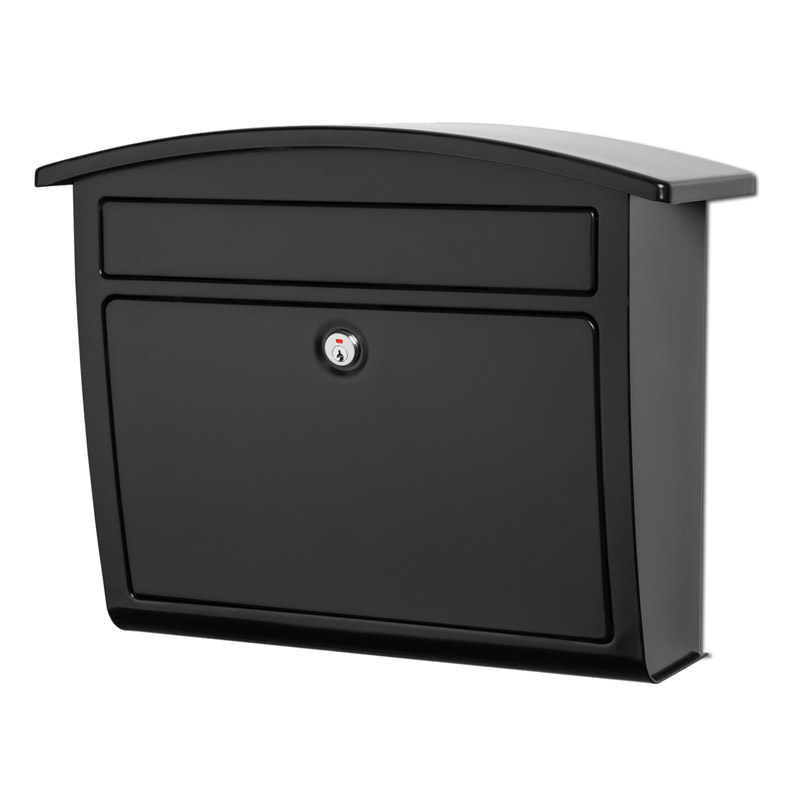
V. Where to Buy Architectural Mailboxes
Architectural Mailboxes products are widely available through various channels, including:
-
Home Improvement Stores: Major home improvement stores like Lowe’s and The Home Depot carry a selection of Architectural Mailboxes models.
-
-
Independent Hardware Stores: Local hardware stores often stock Architectural Mailboxes products, and their staff can provide personalized advice on choosing the right mailbox for your needs.
-
Architectural Mailboxes Website: The Architectural Mailboxes website offers a comprehensive selection of their products with detailed descriptions, specifications, and high-quality images. You can also find a dealer locator tool to find authorized retailers near you.
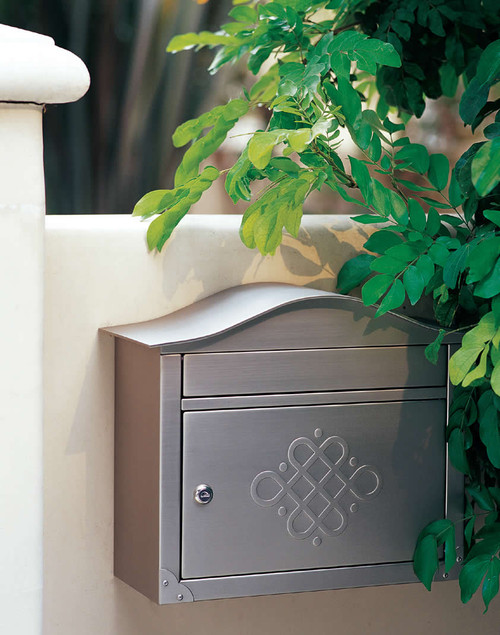
VI. Installation Tips for Architectural Mailboxes
While some Architectural Mailboxes models are relatively easy to install, others may require professional assistance. Here are some general tips for installing your mailbox:
-
Consult the Installation Manual: Always refer to the manufacturer’s installation manual for specific instructions and safety precautions.
-
Gather the Necessary Tools: Depending on the mailbox type and mounting method, you may need tools like a drill, screwdriver, level, wrench, and masonry bits.
-
Choose the Right Location: Ensure your mailbox meets USPS regulations regarding placement, being between 6 and 8 feet high from the curb and at least 6-8 inches from the street.
-
Secure the Mailbox Properly: Use the appropriate hardware and ensure the mailbox is firmly mounted to the wall, post, or pedestal to prevent damage or theft.
-
Double-Check Functionality: After installation, test the mailbox door to ensure it opens and closes smoothly and the locking mechanism functions correctly.

VII. Maintaining Your Architectural Mailbox
With proper care, your Architectural Mailbox will maintain its beauty and functionality for years to come. Here are some simple maintenance tips:
-
Regular Cleaning: Occasionally wipe down the mailbox with a damp cloth and mild soap solution to remove dirt and grime.
-
Maintaining the Finish: Depending on the mailbox material and finish, you may need to apply a coat of wax or paint periodically to preserve its appearance.
-
Checking Hardware: Regularly inspect the mailbox door hinges, screws, and locking mechanisms for signs of wear and tear. Tighten loose screws and replace any worn-out parts as needed.
-
Winter Maintenance: In areas with harsh winters, consider applying a lubricant to the lock mechanism to prevent freezing and ensure smooth operation.
By following these installation and maintenance tips, you can ensure your Architectural Mailbox remains a valuable asset to your property for many years.
VIII. Conclusion
Architectural Mailboxes offers a premium selection of stylish and secure mailboxes to enhance your property’s curb appeal and safeguard your mail. With various styles, designs, and mounting options available, you can find the perfect mailbox to match your needs and preferences. By considering the factors outlined in this guide, you can make an informed decision and invest in a mailbox that provides both functionality and aesthetic value for your home or business.
We hope this comprehensive guide has empowered you to navigate the world of Architectural Mailboxes with confidence. Now, go forth and choose a mailbox that reflects your unique style and keeps your mail safe and secure!
-

Gibraltar Mailboxes Elite Medium Capacity Galvanized Steel Green
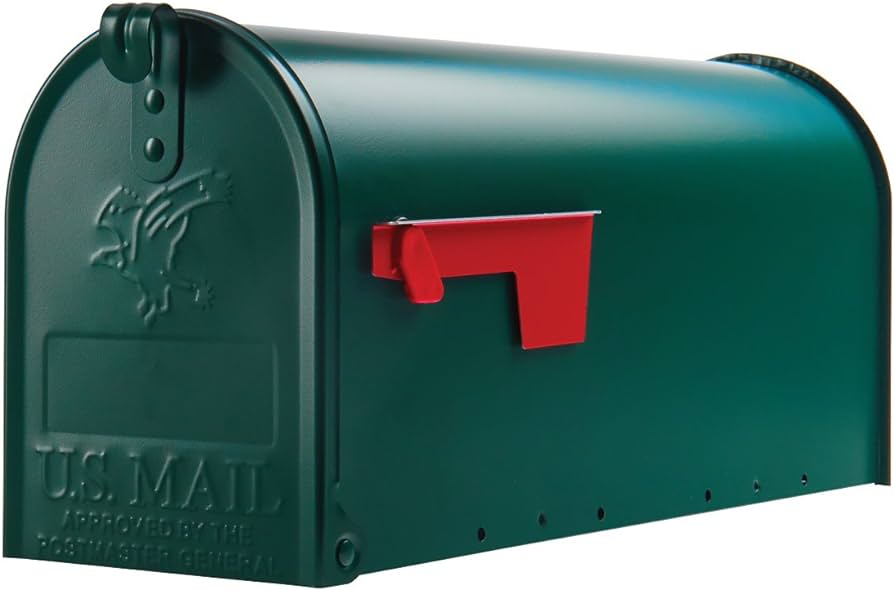
I. Introduction
A. Overview of Gibraltar Mailboxes Elite Medium Capacity Galvanized Steel Green:
In the realm of mailboxes, the Gibraltar Mailboxes Elite Medium Capacity Galvanized Steel Green stands as a popular choice among homeowners seeking a combination of durability, security, and stylish appeal. This mailbox, crafted from galvanized steel, boasts resilience against rust and corrosion, while its powder-coated green finish adds a touch of elegance to any curbside setting.
B. Purpose of the Guide:
This comprehensive guide delves into the intricate details of the Gibraltar Mailboxes Elite Medium Capacity Galvanized Steel Green mailbox, exploring its features, benefits, specifications, and design considerations. Additionally, we’ll delve into the installation process, maintenance guidelines, and user experiences, equipping you with the knowledge necessary to make an informed decision about whether this mailbox aligns with your needs.
II. Features and Benefits of Gibraltar Mailboxes Elite Medium Capacity Galvanized Steel Green
A. Key Features:
-
Durable Construction: Galvanized steel forms the foundation of this mailbox, ensuring its ability to withstand the rigors of harsh weather conditions and resist the damaging effects of rust and corrosion.
-
Powder-Coated Finish: The powder-coated green finish not only enhances the mailbox’s aesthetic appeal but also provides an extra layer of protection against the elements, safeguarding its beauty and longevity.
-
Medium Capacity: This mailbox strikes the perfect balance between size and functionality, accommodating a variety of mail items, including letters, magazines, and even small packages.
-
Secure Design: The mailbox features a sturdy steel latch and comes with pre-drilled holes for mounting a lock (lock not included), providing an extra layer of security to safeguard your valuable mail.
-
Easy Installation: Pre-drilled holes and included mounting hardware make installation a breeze, even for those with limited DIY experience.
B. Benefits:
- Long-lasting Durability: The galvanized steel construction and powder-coated finish ensure that this mailbox will provide years of reliable service, even in challenging weather conditions. Furthermore, the attractive appearance of the sleek design and vibrant green finish complement a wide range of home styles, adding a touch of elegance and sophistication to your curbside appeal.Secure Mail Protection: Additionally, the locking mechanism (lock not included) provides peace of mind, knowing that your mail is protected from theft and tampering. Moreover, the convenient size of the medium capacity accommodates most daily mail items, eliminating the need for frequent trips to the post office.
Hassle-free Installation: With pre-drilled holes and included hardware, installation can be completed quickly and easily, saving you time and effort. Overall, these features make it an ideal option for your residential mailbox needs.

III. Specifications and Design Considerations
A. Specifications:
-
Material: Galvanized steel
-
Finish: Powder-coated green
-
Capacity: Medium
-
Dimensions: 18.75 inches (H) x 10.25 inches (W) x 6.5 inches (D)
-
Weight: 3.5 pounds
B. Design Considerations:
-
Mounting Location: Carefully select a mounting location that is easily accessible for mail delivery and visible from the street, while adhering to USPS regulations.
-
Mounting Height: The mailbox should be mounted between 6 and 8 feet high from the curb, ensuring convenient access for mail carriers.
-
Distance from Street: Maintain a distance of at least 6-8 inches between the mailbox and the edge of the street to prevent obstruction of traffic.
-
Matching Style: Choose a mailbox style that complements the architectural style of your home, enhancing the overall aesthetic of your property.
-
Personalization: Some models offer customization options, such as adding house numbers or a family name, to add a personal touch.

IV. Installation and Maintenance
A. Installation:
-
Gather Tools: Before commencing installation, ensure you have the necessary tools, including a drill, screwdriver, level, wrench, and masonry bits (if mounting to a brick or concrete surface).
- Choose Mounting Location: Carefully select the desired mounting location, ensuring compliance with USPS regulations and considering accessibility for mail delivery. Once this step is complete, you can move on to attaching the mounting bracket.Attach Mounting Bracket: Secure the mounting bracket to the wall, post, or pedestal using the provided hardware, ensuring a firm and level attachment. Following this, you can proceed to mount the mailbox.
Mount Mailbox: Align the mailbox with the mounting bracket and attach it using the provided screws, ensuring a secure and stable fit. Once the mailbox is securely in place, you can move on to the final step.
Check Functionality: Verify that the mailbox door opens and closes smoothly without any resistance, and that the locking mechanism (if installed) functions properly. After completing these checks, your mailbox installation process will be finished.
B. Maintenance:
-
Regular Cleaning: Regularly wipe down the mailbox with a damp cloth and mild soap solution to remove dirt, grime, and cobwebs. This will not only maintain its attractive appearance but also prevent rust and corrosion.
-
Maintaining the Finish: In areas with harsh weather conditions, consider applying a coat of exterior-grade wax or paint periodically to preserve the powder-coated green finish. This will help to prevent fading, chipping, and cracking.
-
Checking Hardware: Inspect the mailbox door hinges, screws, and locking mechanisms (if installed) for signs of wear and tear at least once a year. Tighten any loose screws promptly and replace any worn-out parts to ensure continued functionality and security.
-
Winter Maintenance: For those residing in areas with freezing temperatures, applying a lubricant specifically designed for locks to the locking mechanism can prevent freezing and ensure smooth operation during winter months.
V. User Experience and Customer Reviews
A. User Experience:
Customer reviews for the Gibraltar Mailboxes Elite Medium Capacity Galvanized Steel Green mailbox are generally positive. Users appreciate its durability, highlighting its ability to withstand various weather conditions without showing signs of rust or damage. The attractive green finish and sleek design are also frequently praised, as they complement a variety of home styles and enhance curb appeal. Many users also find the medium capacity to be ideal for their needs, as it can accommodate most daily mail items, reducing trips to the post office. The ease of installation is another frequently mentioned benefit, with users commending the pre-drilled holes and included hardware that streamline the process.
B. Considerations:
While user reviews are mostly positive, it’s important to consider a few potential drawbacks. Some users have noted that the mailbox might feel slightly lightweight compared to heavier-duty models. This, however, shouldn’t be a major concern for typical residential use. Additionally, a few users have mentioned that the green color might not be suitable for all aesthetics. Fortunately, Gibraltar Mailboxes offers this model in other color options to suit various preferences.
VI. Alternatives and Where to Buy
A. Alternatives:
If you’re considering alternatives to the Gibraltar Mailboxes Elite Medium Capacity Galvanized Steel Green mailbox, here are a few options to explore:
-
Gibraltar Mailboxes Elite Large Capacity Galvanized Steel Green offers a larger capacity for those who receive a significant amount of mail regularly. Similarly, the Architectural Mailboxes Oasis Mailbox boasts a classic design with a variety of mounting options and color choices. In contrast, the Toland Mailboxes Rural Mailbox provides a more rustic aesthetic, ideal for farmhouse-style homes.
B. Where to Buy:
The Gibraltar Mailboxes Elite Medium Capacity Galvanized Steel Green mailbox is readily available for purchase through various channels:
-
Home Improvement Stores: Major home improvement stores like Lowe’s and The Home Depot often carry this mailbox model in stock. In addition to physical stores, you can also find this model through online retailers.
Online Retailers: Online retailers like Amazon and Wayfair offer a wide selection of mailboxes, including the Gibraltar Elite Medium Capacity model. Furthermore, if you prefer a more personalized shopping experience, independent hardware stores also frequently stock Gibraltar Mailboxes products.
Independent Hardware Stores: Local hardware stores frequently stock Gibraltar Mailboxes products, and their staff can provide valuable advice on choosing the right mailbox for your needs. Whether you prefer the convenience of online shopping or the expertise of in-person assistance, the Gibraltar Elite Medium Capacity model is readily available from various retailers.
-
Gibraltar Mailboxes Website: The Gibraltar Mailboxes website offers the complete selection of their products, including detailed descriptions, specifications, and high-quality images. You can also find a dealer locator tool to find authorized retailers near you.
VII. Conclusion
The Gibraltar Mailboxes Elite Medium Capacity Galvanized Steel Green mailbox presents a compelling choice for homeowners seeking a balance of durability, security, and aesthetics. With its galvanized steel construction, powder-coated green finish, and medium capacity, this mailbox offers a reliable solution for managing your daily mail. By considering the factors outlined in this guide, you can make an informed decision about whether this mailbox aligns with your needs and preferences. So, if you’re looking for a stylish and secure mailbox that enhances your curb appeal, the Gibraltar Mailboxes Elite Medium Capacity Galvanized Steel Green might be the perfect choice for you.

Garden Arbor, Arch for Wedding Ceremony Party
In the realm of wedding celebrations, the ceremony holds a special significance, marking the union of two souls and the beginning of a new journey together. As couples seek to create a memorable and personalized ceremony setting, garden arbors and arches have emerged as popular choices, providing a stunning backdrop for exchanging vows.
This comprehensive guide delves into the world of garden arbors and arches for wedding ceremonies, equipping you with the knowledge and inspiration to transform your outdoor space into a breathtaking setting for your special day.

I. Introduction: Unveiling the Significance of Garden Arbors and Arches
Garden arbors and arches have long been associated with weddings, symbolizing the gateway to a new life together. These structures, adorned with flowers, greenery, and draping fabrics, create a romantic and enchanting ambiance, setting the stage for a heartfelt and memorable ceremony.
II. Types of Garden Arbors and Arches for Weddings
The versatility of garden arbors and arches allows for a wide range of styles to complement various wedding themes and preferences:
-
Freestanding Arbors: These arbors stand independently, often placed at the end of an aisle or as a focal point in a garden setting.
-
Attached Arbors: Attached arbors are connected to a structure, such as a fence or pergola, adding a charming touch to the existing outdoor space.
-
Round Arbors: Round arbors, also known as circular arbors, create a soft and romantic ambiance, often used for intimate ceremonies.
-
Rectangular Arbors: Rectangular arbors offer a more traditional and formal look, suitable for larger weddings and classic themes.
-
Pointy Arbors: Pointed arbors, often referred to as Gothic arbors, add a touch of elegance and drama to the ceremony setting.
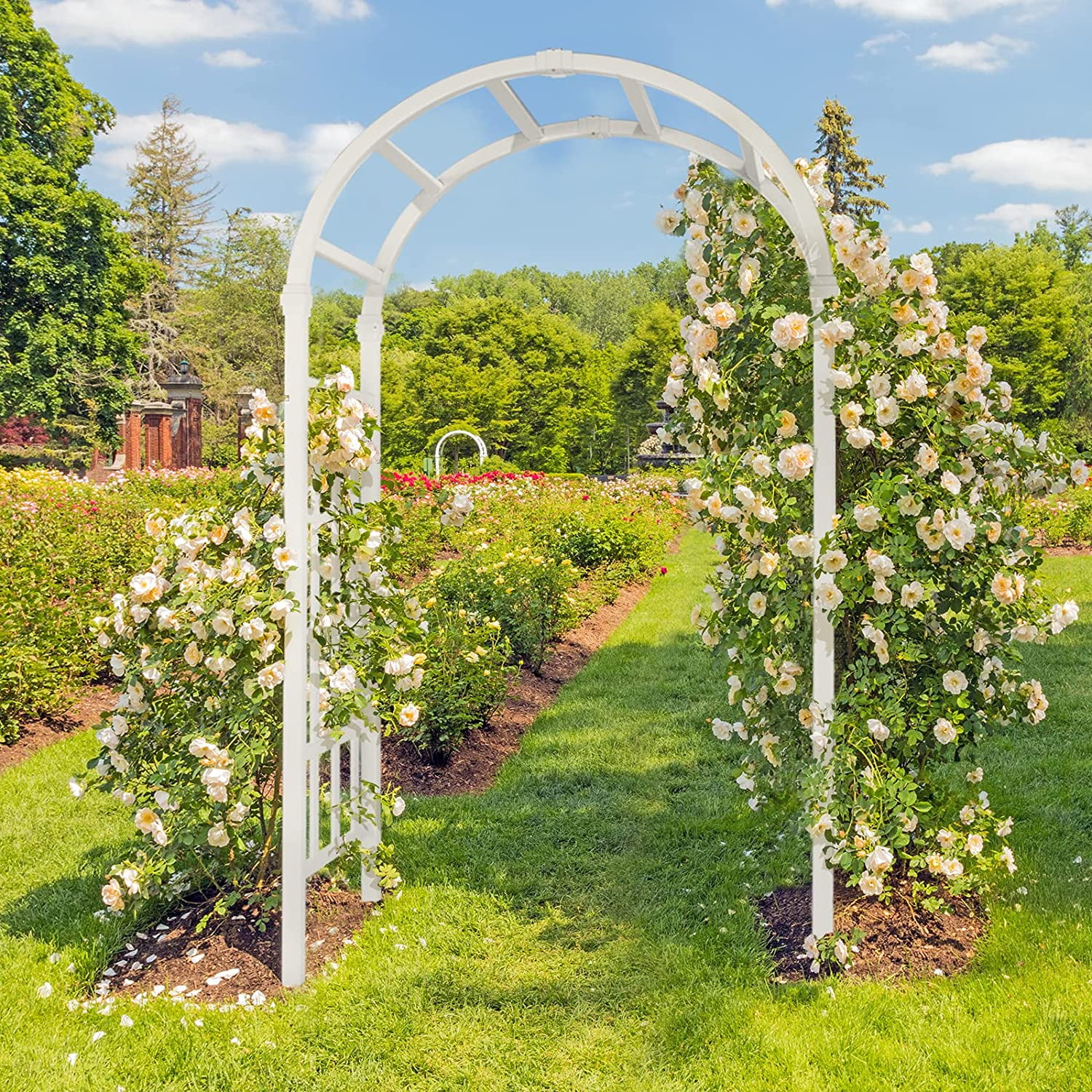
III. Selecting the Right Garden Arbor or Arch for Your Wedding
When choosing a garden arbor or arch for your wedding, consider the following factors:
-
Wedding Theme: Match the style of the arbor or arch to your overall wedding theme, whether it’s rustic, bohemian, vintage, or modern.
-
Ceremony Location: Select an arbor or arch that complements the outdoor setting, considering the size of the space and the surrounding landscaping.
-
Personal Style: Choose an arbor or arch that reflects your personal taste and style, adding a touch of individuality to your wedding décor.
-
Budget: Set a realistic budget for the arbor or arch, considering rental fees, DIY materials, or purchasing options.
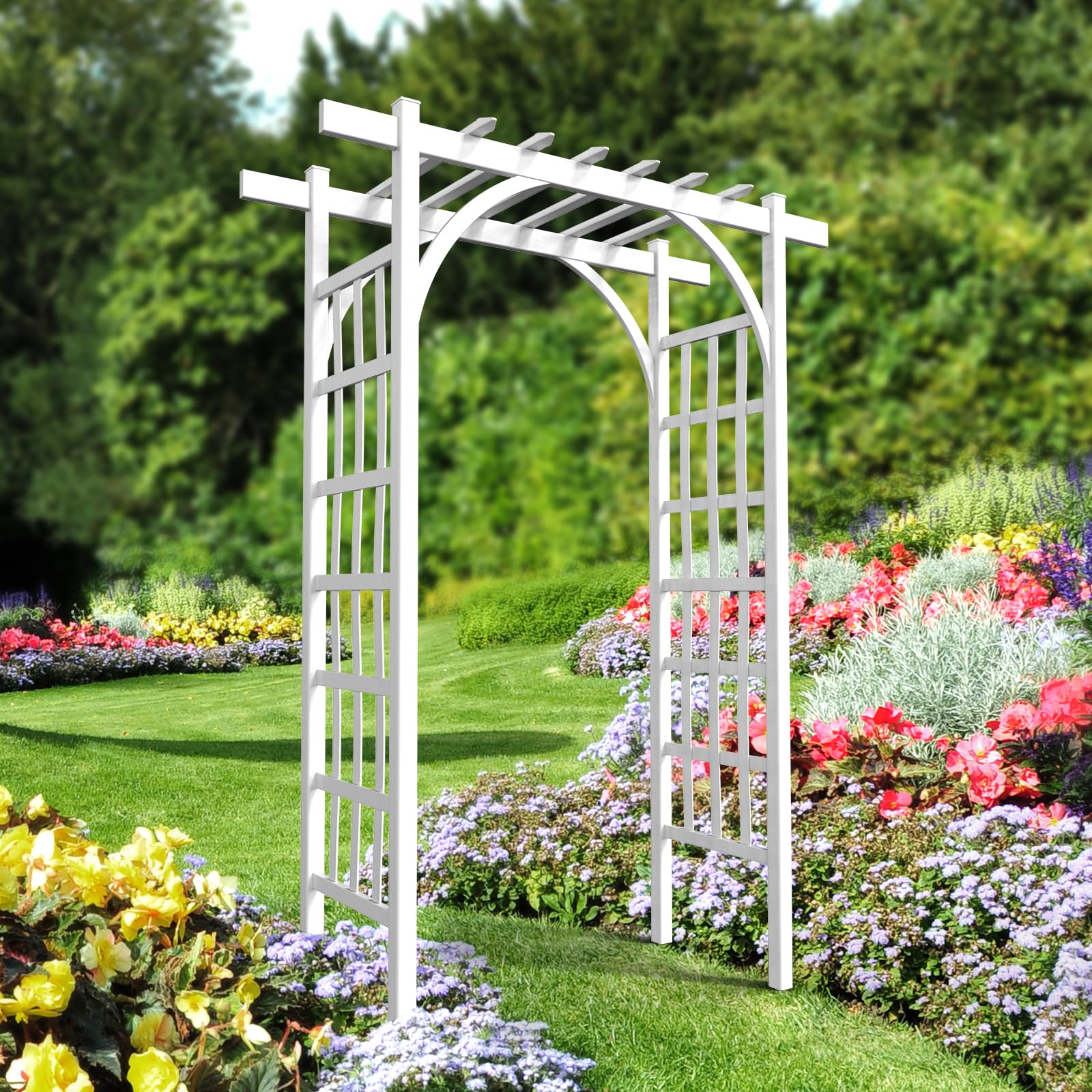
IV. Decorating Your Garden Arbor or Arch for a Dreamy Wedding Setting
Transform your garden arbor or arch into a breathtaking focal point with these creative decoration ideas:
-
Flowers and Greenery: Adorn the arbor or arch with fresh flowers, vines, and foliage that align with your wedding theme and color palette. Additionally, consider adding Draped Fabric: Elevate the ambiance with sheer fabric, tulle, or lace draped over the arbor or arch, adding a touch of elegance and softness. Furthermore, you can incorporate Fairy Lights and Lanterns: String fairy lights or lanterns along the arbor or arch to create a magical and enchanting atmosphere for evening ceremonies.
-
Personal Touches: Incorporate personal touches, such as ribbons, monograms, or photos, to make the arbor or arch a reflection of your love story.
 Seasonal Accents: Embrace seasonal elements, such as autumn leaves or winter greenery, to create a festive and unique setting.
Seasonal Accents: Embrace seasonal elements, such as autumn leaves or winter greenery, to create a festive and unique setting.
V. DIY Garden Arbor or Arch Projects for a Budget-Friendly Wedding
If you’re looking for a cost-effective option, consider creating your own garden arbor or arch:
-
Wooden Arbor: Utilize wooden planks, beams, or dowels to construct a sturdy and rustic arbor, customizable to your desired size and style. In addition, consider a Metal Arbor: Bend metal pipes or rods into a desired shape, creating a modern and minimalist arbor with a touch of industrial chic. Furthermore, you can use PVC Arbor: Use PVC pipes and fittings to build a lightweight and durable arbor, easy to paint or decorate to match your wedding theme. Additionally, employ Bamboo Arbor: Employ bamboo poles or sticks to construct an eco-friendly and naturally beautiful arbor, adding a touch of tropical elegance. Lastly, get creative by repurposing old doors, windows, or salvaged wood to create a unique and sustainable arbor.
VI. Renting a Garden Arbor or Arch for Convenience and Variety
If DIY projects aren’t your forte, consider renting an arbor or arch from a wedding rental company:
-
Wide Selection: Rental companies offer a diverse range of arbors and arches in various styles, sizes, and materials to suit your preferences.
-
Delivery and Setup: Many rental companies provide delivery and setup services, saving you time and effort and ensuring the arbor or arch is installed securely.
- Cost Considerations: While renting eliminates the upfront cost of purchasing an arbor or arch, factor in rental fees, delivery charges, and any potential damage deposits.

VII. Additional Tips for a Flawless Garden Arbor or Arch Ceremony
-
Secure Permits if Necessary: Depending on your location, you might need a permit to place a garden arbor or arch in a public space. Check with your local authorities to avoid any last-minute hiccups.
-
Consider the Weather: If your ceremony is outdoors, be prepared for the elements. Choose a weather-resistant arbor or arch, and have a backup plan in case of rain or strong winds.
-
Plan the Aisle Length: The length of your aisle should complement the size of the arbor or arch. Ensure a comfortable walking distance for you and your partner, while allowing enough space for guests to observe the ceremony comfortably.
-
Coordinate with Your Florist: Discuss your arbor or arch decoration ideas with your florist. They can help you choose the perfect flowers, greenery, and fabrics to create a cohesive and visually stunning display.
-
Lighting for Evening Ceremonies: If your ceremony is held in the evening, ensure proper lighting around the arbor or arch. This will not only enhance the ambiance but also allow for clear photographs and videography.
VIII. Conclusion: A Garden Arbor or Arch – More Than Just Décor
A garden arbor or arch for your wedding ceremony is more than just a decorative element. It serves as a symbolic gateway to your new life together, framing the vows you exchange and creating a lasting memory for you and your guests. By following these tips and letting your creativity flow, you can transform your chosen arbor or arch into a stunning focal point that reflects your love story and sets the stage for a truly unforgettable wedding ceremony.
IX. Beyond the Ceremony: Repurposing Your Garden Arbor or Arch
The beauty of a garden arbor or arch is its versatility. Here are some ways to give it a second life after the wedding celebrations:
-
Garden Entrance: Repurpose your arbor or arch as a charming entrance to your garden, welcoming guests and adding a touch of elegance to your outdoor space. Additionally, utilize it as Climbing Plant Support: Let climbing vines and flowers weave their way around the arbor or arch, creating a vibrant and natural focal point in your garden. Furthermore, consider creating an Outdoor Seating Area: Create a cozy outdoor seating area beneath the arbor or arch, perfect for relaxing afternoons with a book or enjoying a cup of coffee surrounded by nature. Lastly, transform it into a Romantic Patio Setting: Adorn the arbor or arch with fairy lights and soft cushions, transforming it into a romantic haven for intimate evenings under the stars.
By creatively repurposing your garden arbor or arch, you can continue to enjoy its beauty and functionality long after your wedding day.
X. Final Thoughts: A Memorable Beginning to Your Forever Journey
As you embark on the exciting journey of planning your wedding ceremony, remember that every detail, big or small, contributes to creating a special and meaningful experience. A garden arbor or arch can be a beautiful and symbolic addition to your outdoor ceremony, setting the stage for a heartfelt exchange of vows and cherished memories that will last a lifetime.
- Cost Considerations: While renting eliminates the upfront cost of purchasing an arbor or arch, factor in rental fees, delivery charges, and any potential damage deposits.
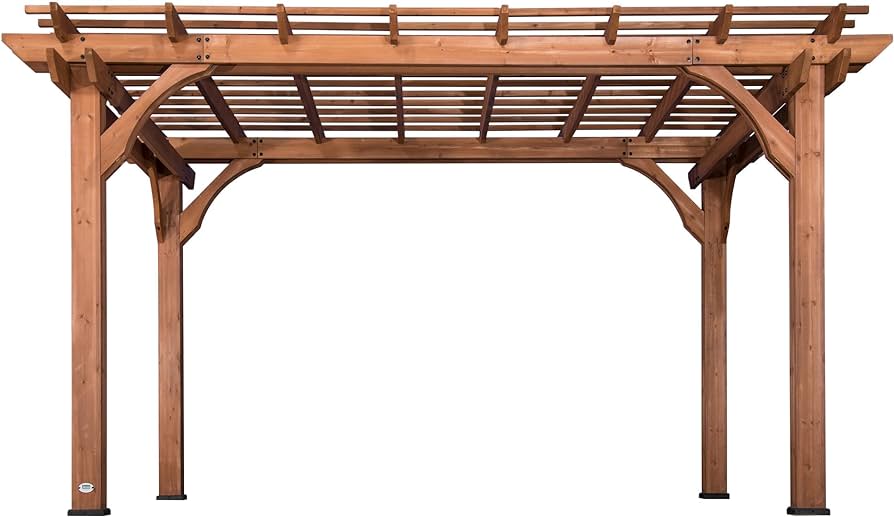
Backyard Discovery Beaumont Pergola: A Comprehensive Guide for Outdoor Enthusiasts
I. Introduction: Unveiling the Backyard Discovery Beaumont Pergola
The Backyard Discovery Beaumont Pergola stands as a testament to the company’s commitment to crafting high-quality and stylish outdoor structures. Its traditional design, combined with durable construction and functional features, makes it a popular choice for homeowners seeking to enhance their outdoor living experience.

II. Key Features of the Backyard Discovery Beaumont Pergola
The Beaumont Pergola boasts a range of impressive features that set it apart from other pergolas in the market:
-
Durable Cedar Wood Construction: Crafted from naturally resistant cedar wood, the Beaumont Pergola is built to withstand the elements, ensuring long-lasting beauty and durability.
-
Spacious Coverage: With various size options available, the Beaumont Pergola can accommodate a variety of outdoor seating arrangements, providing ample shade for gatherings and relaxation.
-
Elegant Design: The pergola’s traditional design complements a wide range of architectural styles, seamlessly integrating into both modern and classic backyards.
-
Customizable PowerPort: An exclusive feature of the Beaumont Pergola, the PowerPort provides convenient access to electrical outlets and USB ports, allowing you to power outdoor appliances, electronics, and lighting.
-
Easy Assembly: The pergola comes with a user-friendly instruction manual and pre-cut materials, making the assembly process straightforward and manageable.
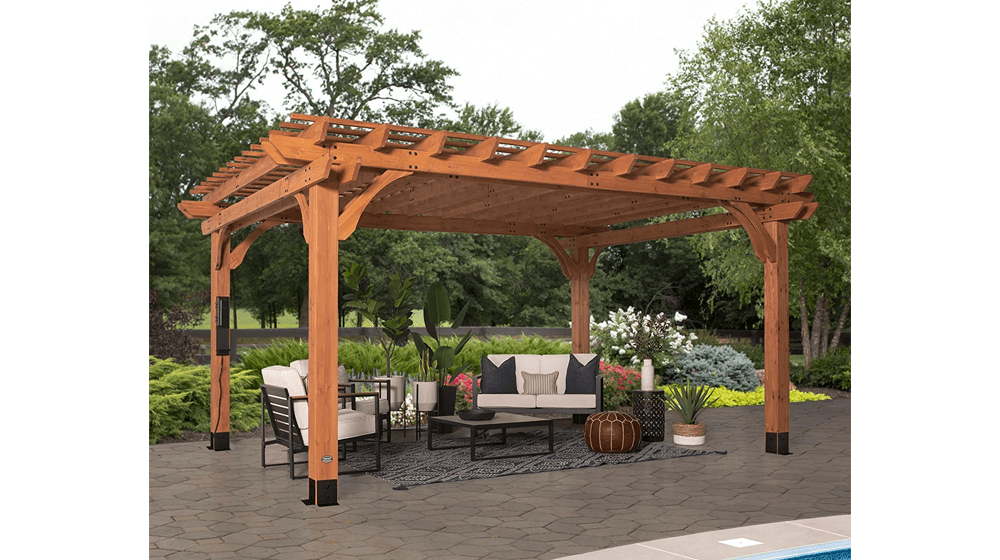
III. Benefits of Owning a Backyard Discovery Beaumont Pergola
The Beaumont Pergola offers a multitude of benefits that enhance the functionality and enjoyment of your outdoor space:
-
Create a Shaded Oasis: The pergola provides a welcome respite from the sun’s harsh rays, creating a comfortable and inviting area for outdoor gatherings and relaxation.
-
Enhance Your Outdoor Décor: The Beaumont Pergola adds a touch of elegance and sophistication to your backyard, transforming it into an aesthetically pleasing outdoor living space.
-
Host Outdoor Events: The pergola provides a designated area for hosting barbecues, parties, and other outdoor events, making it a hub for creating memorable moments with friends and family.
-
Expand Your Living Space: The pergola effectively extends your living space outdoors, allowing you to enjoy the fresh air and natural surroundings while still being protected from the elements.
-
Increase Your Property Value: A well-maintained pergola can add value to your property, making it a worthwhile investment for homeowners.
IV. Choosing the Right Size Backyard Discovery Beaumont Pergola
The Beaumont Pergola comes in various sizes to accommodate different backyard dimensions and seating needs:
-
12 ft. x 12 ft.: This compact size is ideal for smaller backyards or patios, providing a cozy and intimate shaded area.
-
14 ft. x 12 ft.: This larger size offers more coverage, making it suitable for medium-sized backyards and accommodating larger seating arrangements.
-
16 ft. x 12 ft.: The largest size provides ample shade for expansive backyards and can accommodate multiple seating areas or outdoor dining arrangements.

V. Considerations Before Purchasing a Backyard Discovery Beaumont Pergola
Before investing in a Beaumont Pergola, consider the following factors:
-
Available Space: Ensure you have sufficient space in your backyard to accommodate the desired size of the pergola. In addition, check Local Building Regulations: Check with your local authorities for any building permits or regulations that may apply to pergola installations. Furthermore, assess your DIY skills and comfort level with assembly tasks to determine if self-installation is feasible. Finally, consider the cost of the pergola, including materials, tools, and any professional installation fees.
VI. Setting Up and Assembling the Backyard Discovery Beaumont Pergola
The Beaumont Pergola comes with detailed assembly instructions and pre-cut materials, making the setup process straightforward. However, if you lack DIY experience or prefer professional assistance, consider hiring a qualified installer.
VII. Maintaining Your Backyard Discovery Beaumont Pergola
To ensure the longevity and beauty of your Beaumont Pergola, follow these maintenance tips:
-
Regular Cleaning: Regularly clean the pergola with mild soap and water to remove dirt, debris, and mildew. Additionally, consider Wood Sealer Application: Apply a wood sealer or stain annually to protect the wood from moisture damage and UV rays. Furthermore, Inspection and Tightening: Inspect the pergola for loose screws or bolts and tighten them as needed. By following this routine maintenance, you will keep your Beaumont Pergola looking its best for years to come.
-
VIII. Adding a Personal Touch to Your Backyard Discovery Beaumont Pergola
The beauty of the Beaumont Pergola lies in its versatility. Here are some ways to personalize it and create a unique outdoor retreat:
-
Climbing Vines and Plants: Train climbing vines or flowering plants to grow on the pergola’s beams, creating a natural and inviting atmosphere. Additionally, you can use Outdoor Curtains or Fabric Panels: Hang outdoor curtains or fabric panels on the sides of the pergola for added privacy and shade control. Moreover, String Lights and Lanterns: String fairy lights or lanterns across the pergola’s beams to create a warm and inviting ambiance for evening gatherings.
-
Outdoor Furniture and Accessories: Arrange comfortable outdoor furniture, such as couches, chairs, and a fire pit, under the pergola to create a cozy outdoor living space.
-
Outdoor Rugs and Throw Pillows: Add colorful outdoor rugs and throw pillows to seating areas for a touch of comfort and style.

By incorporating these personalization ideas, you can transform your Beaumont Pergola into a one-of-a-kind outdoor haven that reflects your personal style and preferences.
IX. Beyond the Pergola: Exploring Other Backyard Discovery Products
Backyard Discovery offers a wide range of outdoor structures and playsets to enhance your backyard experience. Consider exploring their collection of:
-
Playsets: Backyard Discovery offers a variety of playsets for children of all ages, fostering creativity, physical activity, and outdoor fun. In addition, there are Swings: From classic swing sets to innovative zip lines, Backyard Discovery offers options for every backyard and play style. Also, the Clubhouses: Create a magical space for children’s imaginations with a charming Backyard Discovery clubhouse. Moreover, Sandboxes: Provide endless hours of fun for young children with a sturdy and spacious Backyard Discovery sandbox. Lastly, Storage Sheds: Keep your outdoor equipment, tools, and gardening supplies organized with a Backyard Discovery storage shed.
X. Conclusion: Creating Lasting Memories with the Backyard Discovery Beaumont Pergola
The Backyard Discovery Beaumont Pergola is more than just a structure; it’s an investment in creating lasting memories with loved ones. Whether you’re hosting barbecues, enjoying quiet evenings under the stars, or simply relaxing in a shaded oasis, the Beaumont Pergola provides the perfect setting for outdoor living at its finest. So, if you’re looking to enhance your backyard and create a space for relaxation, entertainment, and connection with nature, the Backyard Discovery Beaumont Pergola might be the perfect addition to your outdoor haven.
XI. Additional Resources for Outdoor Enthusiasts
-
Backyard Discovery Website: Visit the Backyard Discovery website to explore their complete range of outdoor structures and playsets, and access assembly manuals and warranty information. Additionally, you can join Online Landscaping Forums to connect with other outdoor enthusiasts, share design ideas, and seek advice on pergola maintenance and customization. Furthermore, consider Professional Landscape Designers: Consider consulting a professional landscape designer for personalized guidance on incorporating a pergola into your backyard layout and maximizing its aesthetic and functional potential. By utilizing these resources and the information provided in this guide, you can embark on creating a beautiful and functional outdoor space with the Backyard Discovery Beaumont Pergola as its centerpiece. Remember, your backyard should be an extension of your living space, a place to relax, entertain, and create lasting memories with loved ones.
-

The Ultimate Guide to Fly Swatters: Types, Techniques, and Best Practices

In the realm of household pest control, few tools hold as much iconic status as the humble fly swatter. This simple yet effective weapon has been battling pesky flies for generations, providing a satisfying smack of victory and a sense of control over these uninvited guests. But like any weapon, the fly swatter is most effective when wielded with skill and knowledge. This comprehensive guide will equip you with the expertise to transform you into a fly-swatting maestro, ensuring your home remains a fly-free haven.
Navigating the Maze of Fly Swatter Types
The world of fly swatters is not a one-size-fits-all affair. Each type boasts unique characteristics and applications, catering to diverse needs and preferences.
Traditional Wooden Swatters: These classic fly swatters feature a flat wooden head attached to a handle, offering a simple and effective solution for swatting larger flies. Their durability and low cost make them a popular choice.
Electric Swatters: For those seeking a more powerful and modern approach, electric swatters deliver a jolt of electricity upon contact with a fly, instantly eliminating the pest. These swatters are particularly effective against larger and more persistent flies.
Tennis Racket Fly Swatters: For a touch of fun and versatility, repurposing an old tennis racket as a fly swatter can be surprisingly effective. The large surface area allows for broad swings, making it ideal for swatting multiple flies at once.
Mastering the Art of Fly-Swatting Techniques
Effective fly-swatting is not just about brute force; it’s about precision, timing, and strategy. Here’s how to elevate your fly-swatting skills to a whole new level:
Observation and Anticipation: Before striking, take a moment to observe the fly’s movements and anticipate its next flight path. This will give you a head start and increase your chances of a successful swat.
Positioning and Swing: Position yourself strategically, ensuring you have a clear path to the fly. Swing with a smooth, controlled motion, aiming for the fly’s body rather than its wings.
Follow-Through: After making contact, don’t let go of the swatter immediately. Maintain a follow-through motion to ensure the fly doesn’t escape.
Fly Swatter Safety: A Top Priority
While fly swatters are generally safe, it’s important to exercise caution, especially when using electric models:
Child and Pet Safety: Keep children and pets away from fly swatters, especially when they are in use. Explain the dangers of electricity and ensure they understand the proper handling of electric swatters.
Manufacturer’s Instructions: Always follow the manufacturer’s instructions carefully, including guidelines for cleaning, battery replacement, and proper usage.
Avoid Touching the Electric Mesh: Never touch the electric mesh on an electric swatter while it is powered on. This can cause an electrical shock.
Choosing the Right Fly Swatter for Your Needs
The type of fly swatter you choose can significantly impact your fly-swatting success. Consider these factors:
Fly Type: If larger flies are your primary concern, a traditional wooden swatter or electric swatter may be effective. For smaller, more agile flies, a tennis racket swatter can provide more precision.
Size and Weight: Choose a swatter that is a comfortable size and weight for you. A swatter that is too large or too heavy can be difficult to maneuver and may cause fatigue.
Personal Preference: Ultimately, the choice of fly swatter comes down to personal preference. Experiment with different types to find one that suits your style and swatting technique.
Fly Swatter Maintenance and Care
Proper care and maintenance will extend the life of your fly swatter and keep it performing at its best:
Cleaning Wooden Swatters: For wooden swatters, wipe down the surface with a damp cloth to remove dirt and debris. Avoid using harsh chemicals or abrasive cleaners.
Caring for Electric Swatters: For electric swatters, follow the manufacturer’s instructions for cleaning and replacing batteries. Store them in a cool, dry place when not in use.
Proper Storage: Store all fly swatters in a safe place away from direct sunlight and extreme temperatures. This will prevent them from warping or cracking.
Fly Swatter Alternatives: Exploring Additional Options
While fly swatters are a classic and effective tool, they are not the only weapon in the fight against flies. Here are some alternative methods to consider:
Fly Traps: Employ fly traps that lure flies using bait and then trap them inside. These traps are particularly effective for controlling large fly populations.
Sticky Traps: Sticky traps use a sticky adhesive to capture flies that land on them. These traps are discreet and can be placed in strategic locations.
Natural Repellents: Utilize natural repellents like citronella candles or citronella oil sprays to create a barrier against flies.
These repellents offer a pleasant fragrance and are safe for children and pets. However, their effectiveness may vary depending on the fly species and the severity of the infestation.
The Final Splat: A Fly-Free Future Awaits
By understanding the diverse types of fly swatters, mastering effective swatting techniques, and prioritizing safety, you are now armed to wage war on those pesky flies with confidence. Remember, the right fly swatter, coupled with a strategic approach and proper maintenance, can significantly reduce fly populations in your home.
Don’t hesitate to explore the vast array of fly swatters and alternative methods available. Whether you opt for the classic wooden swatter, the high-tech electric option, or a repurposed tennis racket, there’s a perfect fly-swatting solution waiting for you. Embrace the satisfaction of a successful swat and create a fly-free haven for yourself and your loved ones.
Bonus: Resources to Enhance Your Fly-Swatting Prowess
- Online fly swatter reviews and comparisons to identify the ideal swatter for your needs and budget.
- Pest control websites and forums packed with valuable tips on fly identification, prevention strategies, and safe and effective fly control methods.
- DIY fly trap tutorials to equip you with the knowledge to create your own fly-trapping solutions.
- Reputable hardware stores staffed with knowledgeable experts who can offer personalized advice on choosing and using fly swatters and other fly control solutions.
With this wealth of information at your disposal, you are well on your way to becoming a fly-swatting champion. So, the next time a fly dares to invade your space, remember the techniques you’ve learned, choose your weapon wisely, and deliver a resounding swat that sends a clear message: your home is a fly-free zone!

Choosing the Right Bug Zapper: Types, Placement, and Maintenance Tips

As the sun casts its golden glow upon our outdoor spaces, beckoning us to bask in its warmth and revel in the beauty of nature, an unwelcome troupe of uninvited guests often joins the party – pesky insects. From the incessant buzzing of mosquitoes to the irritating bites of flies, these intruders can quickly transform a tranquil outdoor haven into a battleground against the forces of nature. Enter the bug zapper, a beacon of hope in the fight against these airborne nuisances.
Navigating the Maze of Bug Zapper Types
In the realm of bug zappers, where technology meets the desire for a pest-free outdoor experience, a variety of options awaits. Each type boasts its unique characteristics and applications, catering to diverse needs and preferences. Transition: When considering bug zappers options, electric grid bug zappers, the most common and recognizable type, emit an electric current between two metal grids. Attracted by the light, insects make contact with the grid, meeting their demise. Their effectiveness and affordability make them a popular choice. On the other hand, ultraviolet light bug zappers, utilizing ultraviolet (UV) light to lure insects, emit a wavelength that mimics the moonlight insects follow for navigation. As insects approach the light, they are sucked into a fan and trapped. These zappers are effective against a wider range of insects, including moths and gnats.
Propane-powered bug zappers, releasing a steady plume of carbon dioxide, mimic human breath, a powerful attractant for mosquitoes. Conquer large outdoor spaces with these mosquito-slaying zappers! Unlike traditional zappers, these innovative models attract even mosquitoes that don’t care for UV light. They achieve this by emitting a plume that mimics human breath, a natural mosquito magnet. Once those pesky insects get close, a powerful fan sucks them in and traps them, keeping your evenings bite-free.
Decoding the Factors that Shape Your Choice
Selecting the right bug zapper is not a mere whim; it’s a strategic decision that aligns with your outdoor pest control needs. Several factors demand careful consideration to ensure you find the perfect match.
Coverage Area: Consider the size of your outdoor space and choose a bug zapper with an effective coverage area that can adequately control the insect population. For smaller patios or balconies, a compact zapper is sufficient, while larger yards or gardens may require a more powerful model.
Bug Type: Identify the types of insects prevalent in your area and choose a bug zapper specifically designed to attract and eliminate those pests. If mosquitoes are your primary concern, an UV light zapper or a propane-powered zapper may be the best choice. For flies and gnats, an electric grid zapper can be effective.
Safety Features: Prioritize safety by selecting a bug zapper with protective features that minimize the risk of accidental contact with humans or pets. Look for zappers with grounded grids, outer protective cages, and low-voltage designs.
Additional Features: Explore additional features that enhance the effectiveness and convenience of your bug zapper. Weatherproofing is crucial for outdoor use, while timers can automate operation and silent operation ensures a peaceful outdoor experience.
Brands that Elevate the Bug Zapping Experience
In the realm of bug zappers, certain brands stand out as beacons of quality, performance, and innovation, earning the trust of homeowners and pest control enthusiasts worldwide.
The renowned American brand, Black & Decker, celebrates its bug zappers for their durable and reliable nature, featuring innovative designs and effective pest control capabilities. These bug zappers boast large coverage areas, meaning they can effectively control pests across a wide space. They also pack a punch with multiple insect attraction methods, luring in a variety of unwanted visitors. And for peace of mind, these zappers come loaded with safety features to keep you, your family, and your pets protected.
Flowtron, another American stalwart, has garnered a reputation for delivering exceptional pest control performance with their high-quality bug zappers. These zappers are crafted from premium materials and feature advanced technologies, such as dual UV light tubes and variable power settings.
Havahart, a company dedicated to humane pest control solutions, offers a range of bug zappers that combine effectiveness with safety. Their zappers are known for incorporating protective grids, low-voltage designs, and non-toxic pest elimination methods.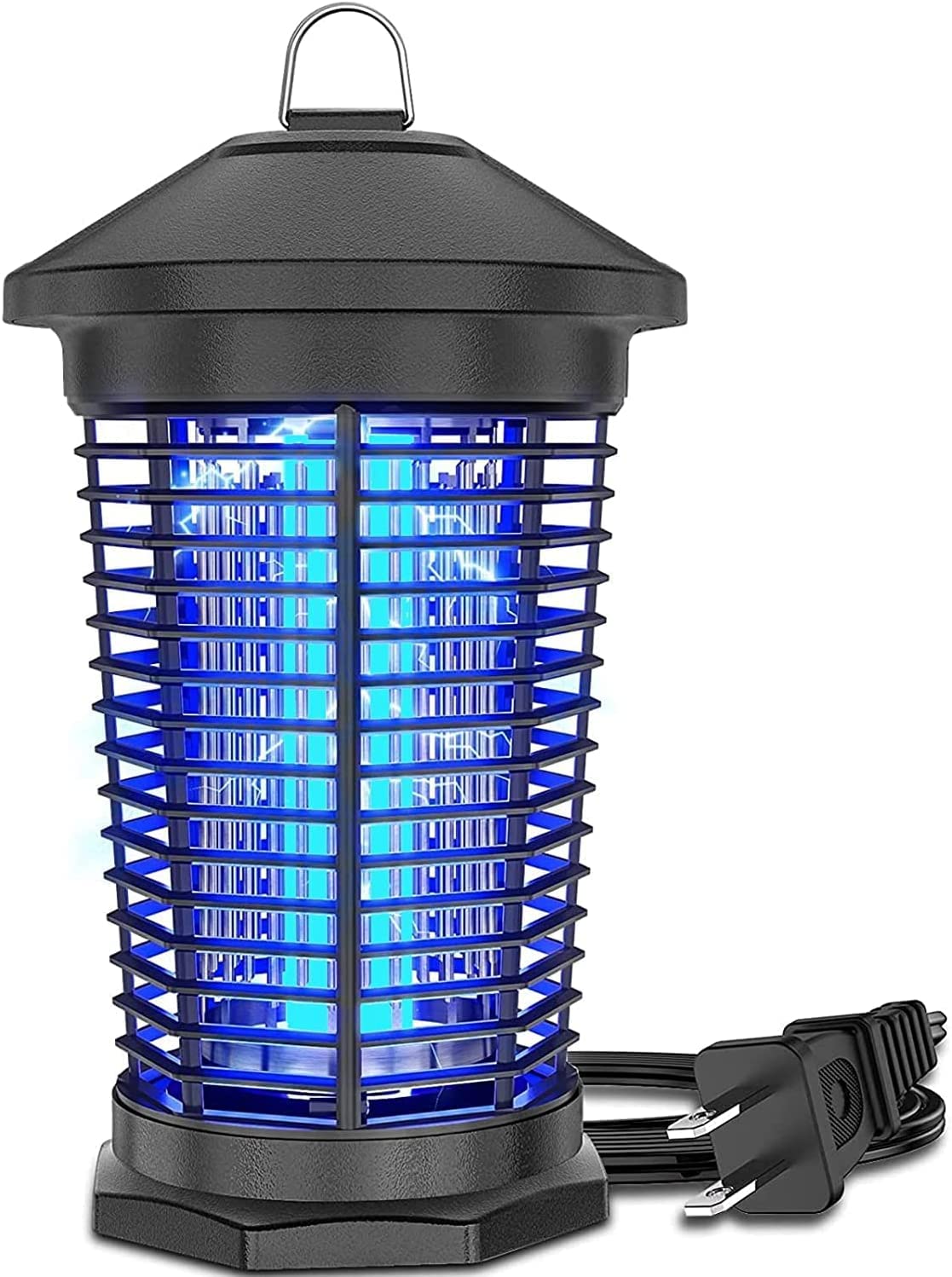
Nurturing Your Bug Zapper to Longevity
Like any faithful companion, your bug zapper deserves proper care and attention to ensure a long and pest-free partnership. By following these simple guidelines, you’ll extend the life of your zapper and keep it performing at its best.
Cleaning: Regularly inspect your bug zapper for dead insects and debris that can accumulate on the grid or surrounding areas. Clean the grid periodically using a soft brush or a mild detergent solution to prevent damage and ensure optimal performance.
Inspection: Before each pest control season, thoroughly inspect your bug zapper for any signs of damage, such as loose connections, cracked casings, or damaged grids. Replace any worn or broken parts promptly to prevent safety hazards and ensure effective operation.
Storage: When not in use, store your bug zapper in a cool, dry place away from direct sunlight and extreme temperatures. This prevents the zapper from cracking or becoming brittle and ensures it remains in good condition for the next pest control season.
Strategic Placement: Unleashing the Zapping Power
With your trusty bug zapper in hand and a clear understanding of its capabilities, it’s time to unleash its power! Here’s how to strategically place your zapper for maximum effectiveness:
Targeting the Buffet: Don’t place your zapper directly next to seating areas or food preparation zones. This can attract beneficial insects like ladybugs and create an unpleasant dining experience.
Guarding Entryways: Consider placing your zapper near entryways, patios, and decks, where insects are most likely to enter your outdoor space. This creates a perimeter of defense against airborne pests.
Position your zapper in a partially shaded area to attract insects while minimizing the impact on your outdoor ambiance, as many insects are attracted to light.
Safety First: A Pledge for Responsible Zapping
Safety is paramount when using a bug zapper. Here are some precautions to keep in mind:
Electrical Safety: Exercise caution with electrical cords and avoid placing the zapper near water sources. Always unplug the zapper before cleaning or performing maintenance.
Pet and Child Safety: Keep children and pets away from the zapper while it’s in operation. Ensure the zapper is placed securely and cannot be easily knocked over.
Following Instructions: Always follow the manufacturer’s instructions for safe operation and maintenance of your bug zapper. This includes proper disposal of dead insects and avoiding touching the grid while it’s powered on.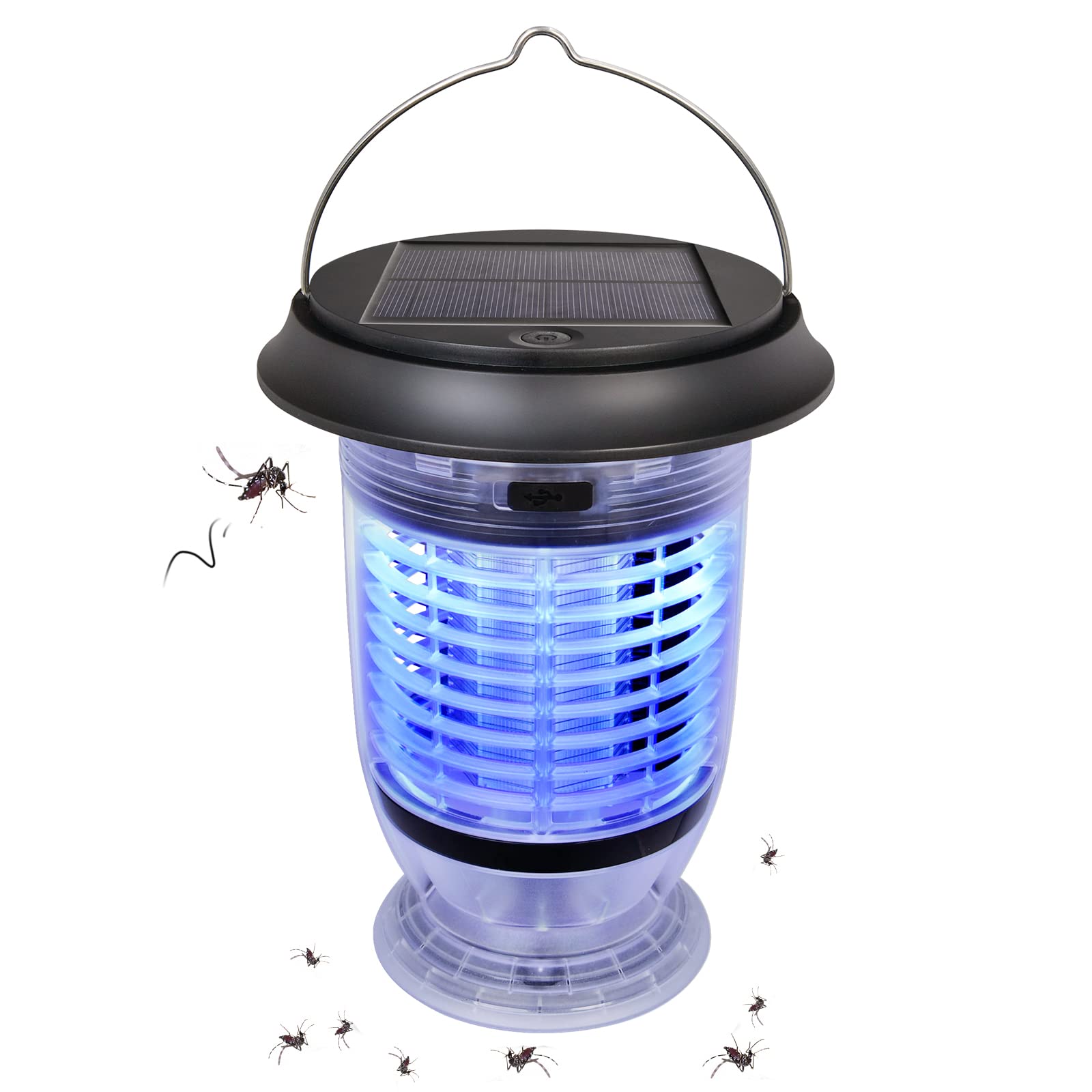
Bug Zapper Alternatives: Exploring Additional Options
While bug zappers offer a powerful solution, they are not the only weapon in the fight against outdoor pests. Here are some alternative methods to consider:
Natural Repellents: Utilize natural repellents like citronella candles or citronella oil sprays to create a barrier against mosquitoes and other insects. These are safe for children and pets and offer a pleasant fragrance.
Mosquito Traps: Employ mosquito traps that lure insects using carbon dioxide or light, then trap them inside a container. These traps are effective for specific purposes but may require regular emptying.
Habitat Modification: Consider modifying your outdoor space to make it less attractive to insects. Eliminate standing water sources, trim overgrown vegetation, and keep trash cans sealed to reduce potential breeding grounds.
Conclusion: A Bug-Free Oasis Awaits
Now that you understand the diverse types of bug zappers, their functionalities, and the importance of proper use and maintenance, you are equipped to create a more peaceful and pest-free outdoor haven.
Remember, the right bug zapper, coupled with strategic placement, safety precautions, and potentially even alternative methods, can significantly reduce insect populations and enhance your outdoor enjoyment. Explore the vast array of zappers and alternatives available, and embark on a journey of creating a tranquil oasis, free from the buzzing and biting of unwanted insect guests.
Bonus: Unveiling Additional Resources
- By conducting online bug zapper reviews and comparisons, you can identify the perfect zapper for your needs and budget. In addition, pest control websites and forums provide valuable tips on insect identification, prevention strategies, and safe and effective pest control methods. Furthermore, DIY bug zapper maintenance tutorials can equip you with the knowledge to tackle minor repairs and extend the life of your zapper. Moreover, reputable hardware stores employ knowledgeable experts who can offer personalized advice on choosing and using bug zappers and other pest control solutions. By accessing this wealth of information, you can master outdoor pest control, ensuring your summer evenings are filled with laughter, relaxation, and minimal buzzing interruptions.

The Ultimate Guide to Garden Water Guns: Types, Uses, and Maintenance Tips

In the realm of gardening, where nature’s artistry intertwines with human care, the garden water gun stands as a versatile tool, a playful companion that transforms ordinary watering tasks into refreshing experiences. Whether it’s gently nurturing delicate blooms, powerfully cleaning patios, or engaging in exhilarating water fights, the garden water gun proves its worth as a true asset in any gardener’s arsenal. Embark on a journey into the world of garden water guns, exploring their diverse types, essential considerations, and effective usage techniques, transforming your gardening experience into a symphony of fun and functionality.
Navigating the Maze of Garden Water Gun Types
As you venture into the aisles of hardware stores or browse online marketplaces, you’ll encounter a dazzling array of garden water guns, each vying for your attention. To make an informed decision, it’s crucial to understand the distinct characteristics and applications of each type.
Pistol grip water guns, the most common and user-friendly variety, offer a comfortable grip and easy maneuverability, making them ideal for everyday watering tasks. Their compact design and trigger-style operation allow for precise control over water flow.
Lever grip water guns, known for their durability and powerful streams, are perfect for tackling tougher jobs like cleaning driveways or washing cars. Their sturdy construction and lever-activated mechanism provide a steady flow of water, even under high pressure.
Hose-end water guns, the most economical option, attach directly to your garden hose, eliminating the need for a separate handle. They offer a wide range of spray patterns, from gentle mists to powerful jets, catering to diverse watering needs.
Decoding the Factors that Shape Your Choice
Selecting the right garden water gun is not a mere whim; it’s a strategic decision that aligns with your gardening and cleaning needs. Several factors demand careful consideration to ensure you find the perfect match.
Spray Patterns: The versatility of a garden water gun lies in its ability to deliver water in a variety of patterns. Jet streams, ideal for cleaning hard surfaces, offer a concentrated blast of water. Cone sprays, suitable for watering plants, provide a wider coverage area. Misting patterns, gentle on delicate foliage, produce a fine, refreshing mist.
Water Flow: The water flow rate of your water gun determines the speed and intensity of the watering stream. A higher flow rate is ideal for cleaning tasks or watering large areas, while a lower flow rate is suitable for delicate plants or conserving water.
Durability: Durability is paramount, especially if you plan to use your water gun frequently or for heavy-duty tasks. Choose a water gun made from high-quality materials, such as metal or reinforced plastic, that can withstand regular use and potential abuse.
Comfort: Ergonomics play a crucial role in ensuring a comfortable and enjoyable watering experience. Consider the grip size, handle shape, and weight of the water gun to avoid hand fatigue or discomfort during extended use.
Brands that Elevate the Garden Water Gun Experience
In the realm of garden water guns, certain brands stand out as beacons of quality and performance, earning the trust of gardeners and DIY enthusiasts worldwide.
Melnor, a renowned American brand, is celebrated for its innovative designs and user-friendly features. Their water guns are known for their comfortable grips, adjustable spray patterns, and leak-proof seals.
Gilmour, another American stalwart, has garnered a reputation for its durable construction and reliable performance. Their water guns are crafted from high-quality materials and feature rugged designs to withstand demanding use.
Dramm, a family-owned American company, prides itself on crafting premium water guns using the finest materials. Their water guns are known for their exceptional durability, corrosion resistance, and weather tolerance.
Aqua Joe, a global brand with a focus on innovation and affordability, offers a wide range of garden water guns that cater to diverse needs. Their water guns are known for their lightweight designs, multiple spray patterns, and value-for-money pricing.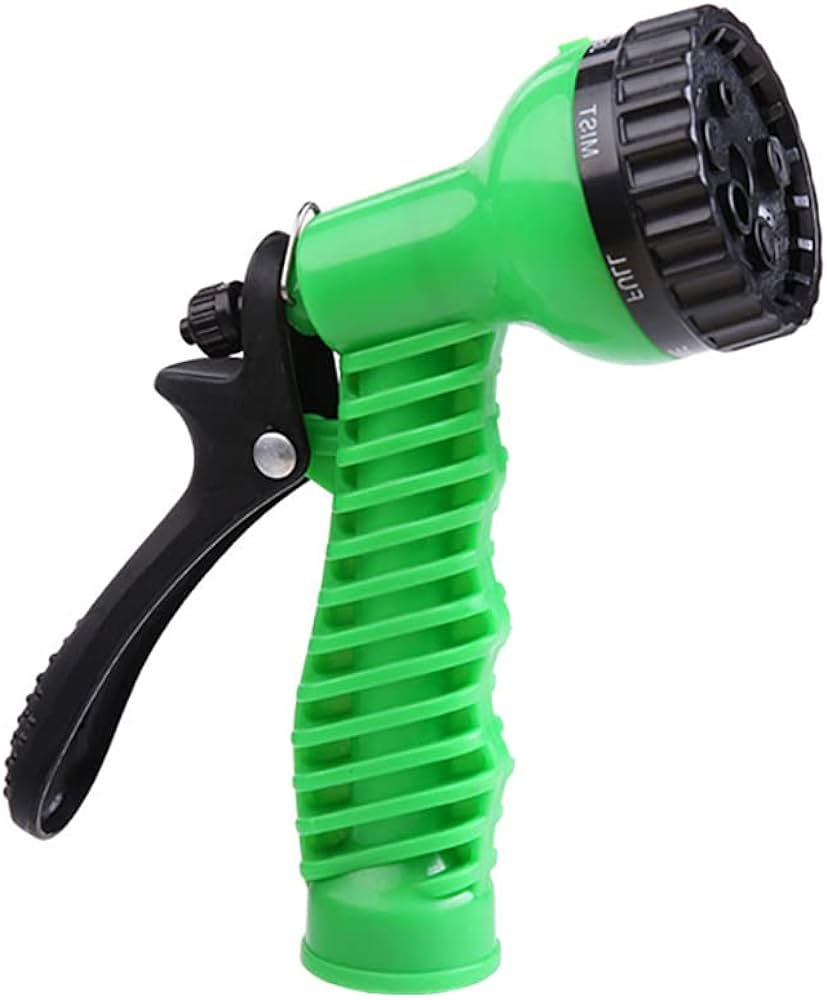
Nurturing Your Garden Water Gun to Longevity
Like any faithful companion, your garden water gun deserves proper care and attention to ensure a long and fruitful partnership. By following these simple guidelines, you’ll extend the life of your water gun and keep it performing at its best.
Cleaning: Regularly inspect your water gun for dirt, debris, and mineral buildup. Clean it periodically using a mild detergent and water solution to prevent corrosion and ensure smooth operation.
Inspection: Before each watering or cleaning season, thoroughly inspect your water gun for leaks, cracks, or signs of wear and tear. Replace any damaged parts promptly to prevent water loss and potential damage to your water source or surroundings.
Storage: When not in use, store your water gun in a cool, dry place away from direct sunlight and extreme temperatures. This prevents the water gun from cracking or becoming brittle.
Harnessing the Power of Your Garden Water Gun
With your trusty garden water gun in hand and the knowledge of its capabilities, you’re ready to conquer a variety of tasks in your garden and beyond. Here’s how to unlock the full potential of your water gun:
Effective Watering Techniques:
- Matching Spray to Plant: Utilize the adjustable spray patterns to your advantage. Gentle misting is ideal for delicate seedlings and leafy greens, while a cone spray is suitable for established plants and shrubs. Avoid using powerful jet streams on fragile plants, as they can damage leaves and stems.
- Targeting the Roots: Focus the water flow at the base of the plant, where it’s most needed for root absorption. Watering the foliage can waste water and promote fungal diseases.
- Early Morning or Evening: Water your plants early in the morning or late in the evening to minimize water evaporation caused by the heat of the day. Cooler temperatures allow for better water absorption by the plants.

Beyond Watering: Unveiling Creative Applications
- Cleaning Champion: Unleash the cleaning power of your water gun! A forceful jet stream is perfect for removing dirt and grime from patios, decks, and outdoor furniture. Remember to adjust the pressure to avoid damaging delicate surfaces like painted wood.
- Car Care Companion: Give your car a quick wash with a gentle spray pattern. This is a great way to remove dust and loose dirt before a more thorough car wash.
- Water Wars: Embrace the playful side of gardening! Engage in refreshing water fights with friends and family on a hot summer day. Remember to use a gentle spray pattern and ensure everyone is participating safely.
Safety First: A Gardener’s Pledge
Safety is paramount when wielding your garden water gun. Here are some precautions to keep in mind:
- Water Pressure: Exercise caution when dealing with pressurized water systems. Leaks or loose connections can cause forceful water sprays that can lead to injuries. Turn off the water supply before starting any maintenance or repairs.
- Supervise Play: Never leave children unattended around running water guns. Ensure responsible use and avoid aiming the water gun at people or electrical outlets.
- Eye Protection: Consider wearing protective eyewear when using powerful spray patterns, especially for cleaning tasks or when working near flying debris.
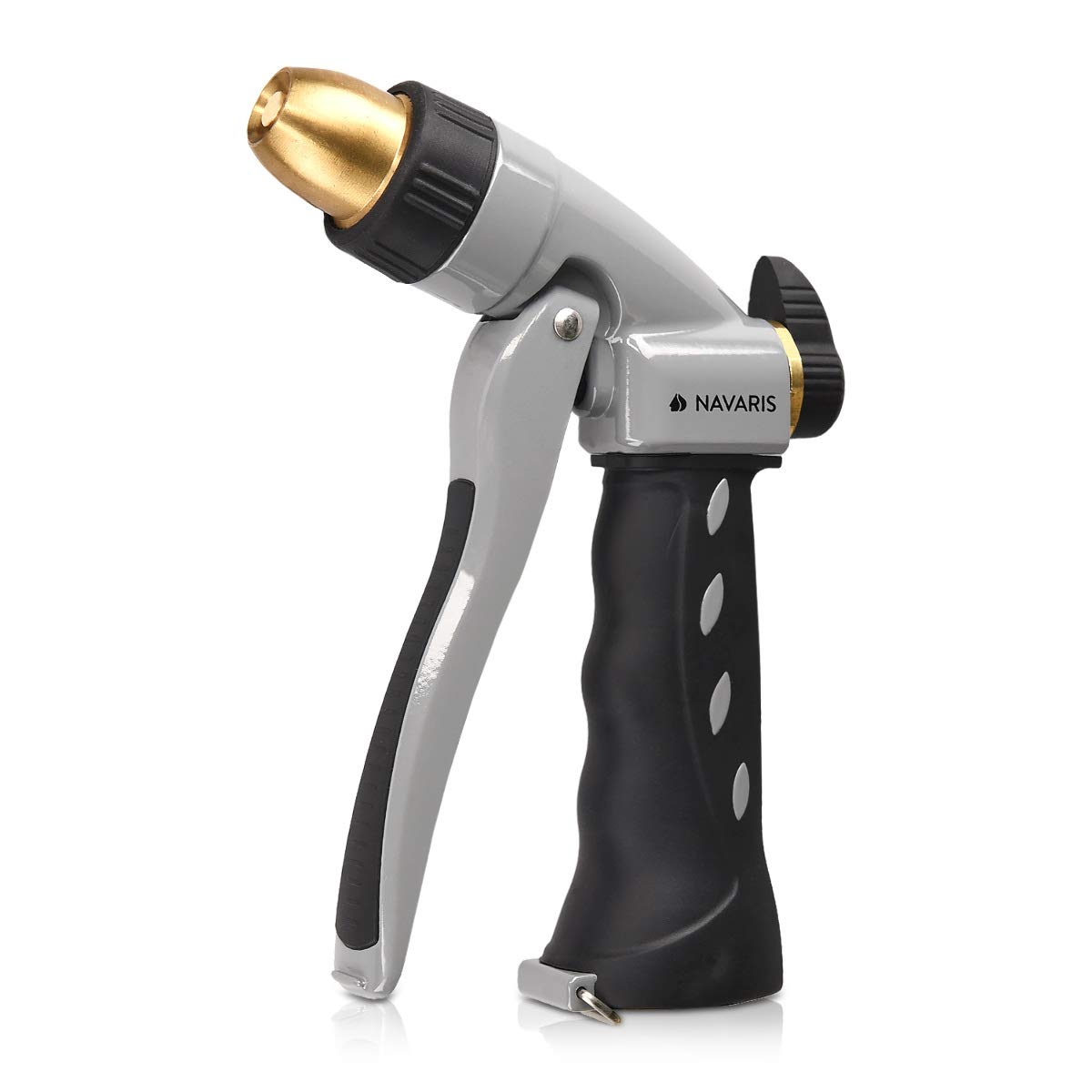
Enhancing Your Garden Water Gun Experience
A plethora of garden water gun accessories awaits to elevate your watering and cleaning experience:
- Nozzles: Invest in interchangeable nozzles to further customize your spray patterns. Fog nozzles offer an ultra-gentle mist for delicate seedlings, while soaker nozzles deliver a steady stream of water ideal for deep root watering.
- Filters: Attach a filter to your water gun to prevent clogs caused by dirt or debris in your water source. This ensures a smooth flow of water and protects the internal mechanisms of your water gun.
- Hose Connectors: Utilize quick-connect hose connectors for effortless attachment and detachment of your water gun to your garden hose. This saves time and eliminates the need for fumbling with threaded connections.
The Final Bloom: A Garden Water Gun Odyssey Concludes
By demystifying the world of garden water guns, from their diverse types and features to essential care and effective usage techniques, you are now equipped to transform your gardening and cleaning routines. Remember, the right water gun, coupled with proper care and responsible use, becomes a multi-purpose tool in your gardening arsenal. Explore the vast array of water guns and accessories available, and embark on a journey of creating a thriving oasis, all while keeping your garden clean and your spirits high.
Bonus: Unveiling Additional Resources
- Online garden water gun reviews and comparisons to identify the perfect water gun for your needs and budget.
- Gardening websites and forums packed with valuable tips on watering techniques, plant care, and effective use of garden tools.
- DIY garden water gun maintenance tutorials to equip you with the knowledge to tackle minor repairs and extend the life of your water gun.
- Reputable hardware stores staffed with knowledgeable experts who can offer personalized advice on garden water gun selection and usage.
With this wealth of information at your disposal, you are well on your way to becoming a garden water gun maestro, ensuring your gardening endeavors are not only fruitful but also enjoyable and efficient.
